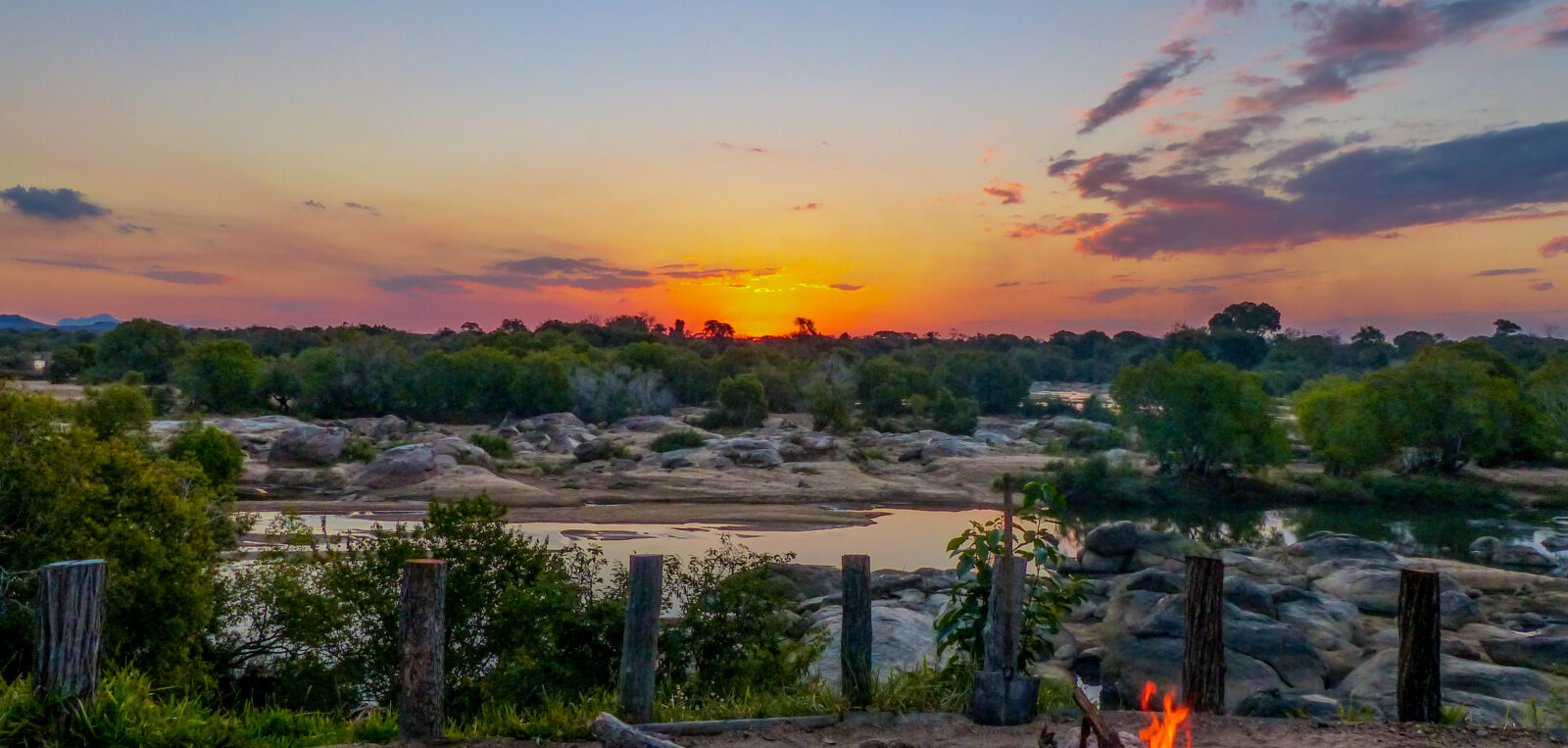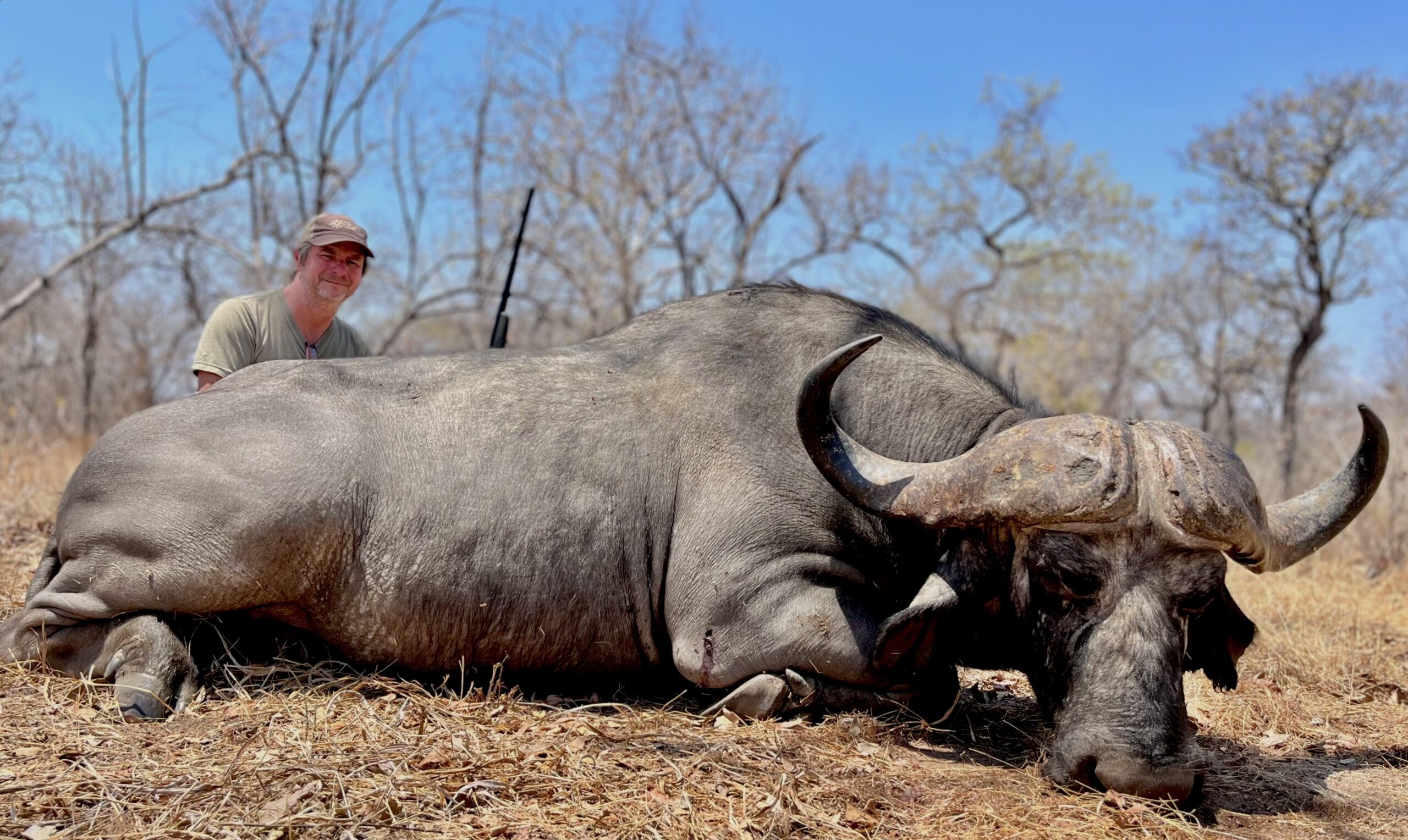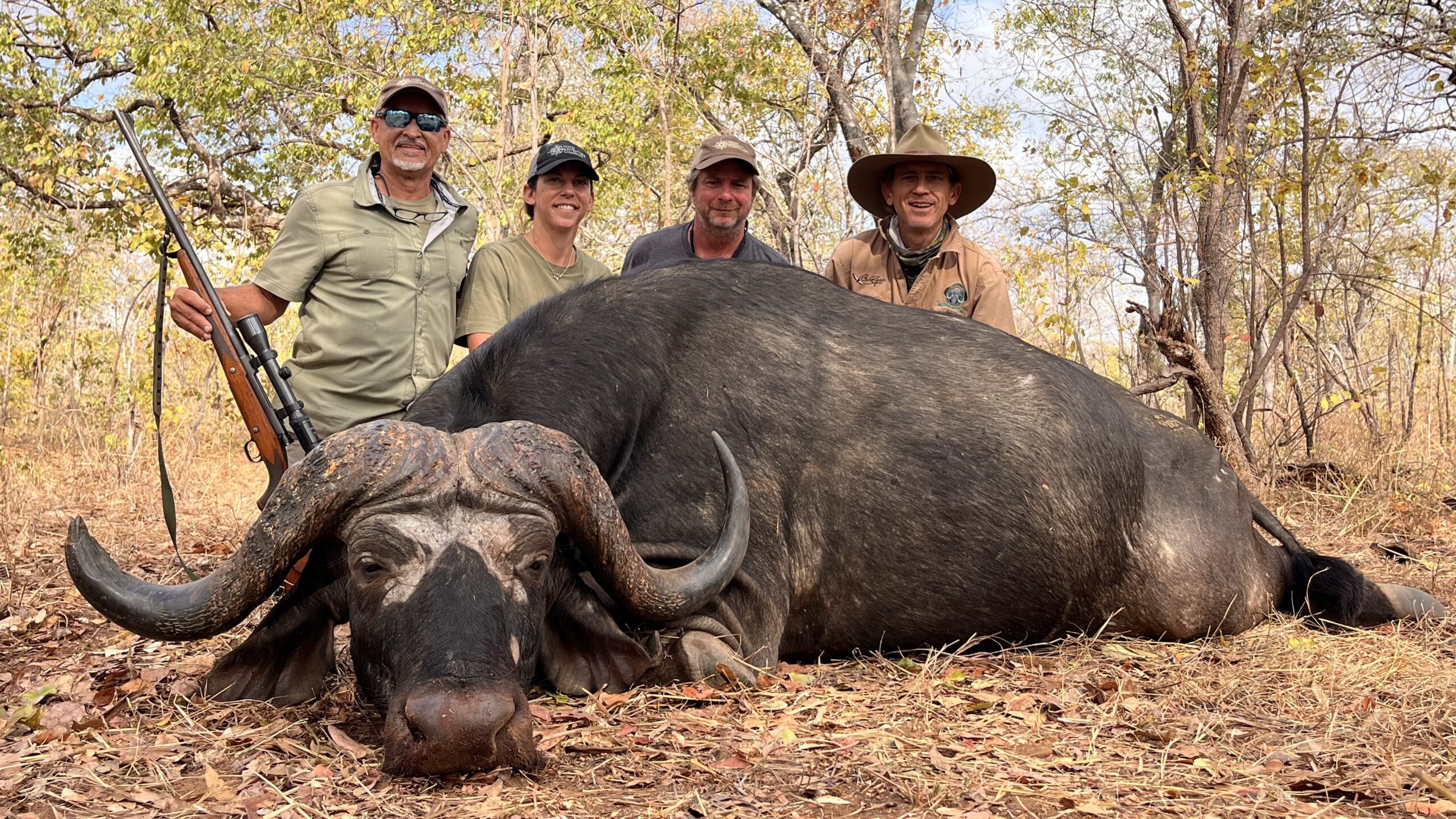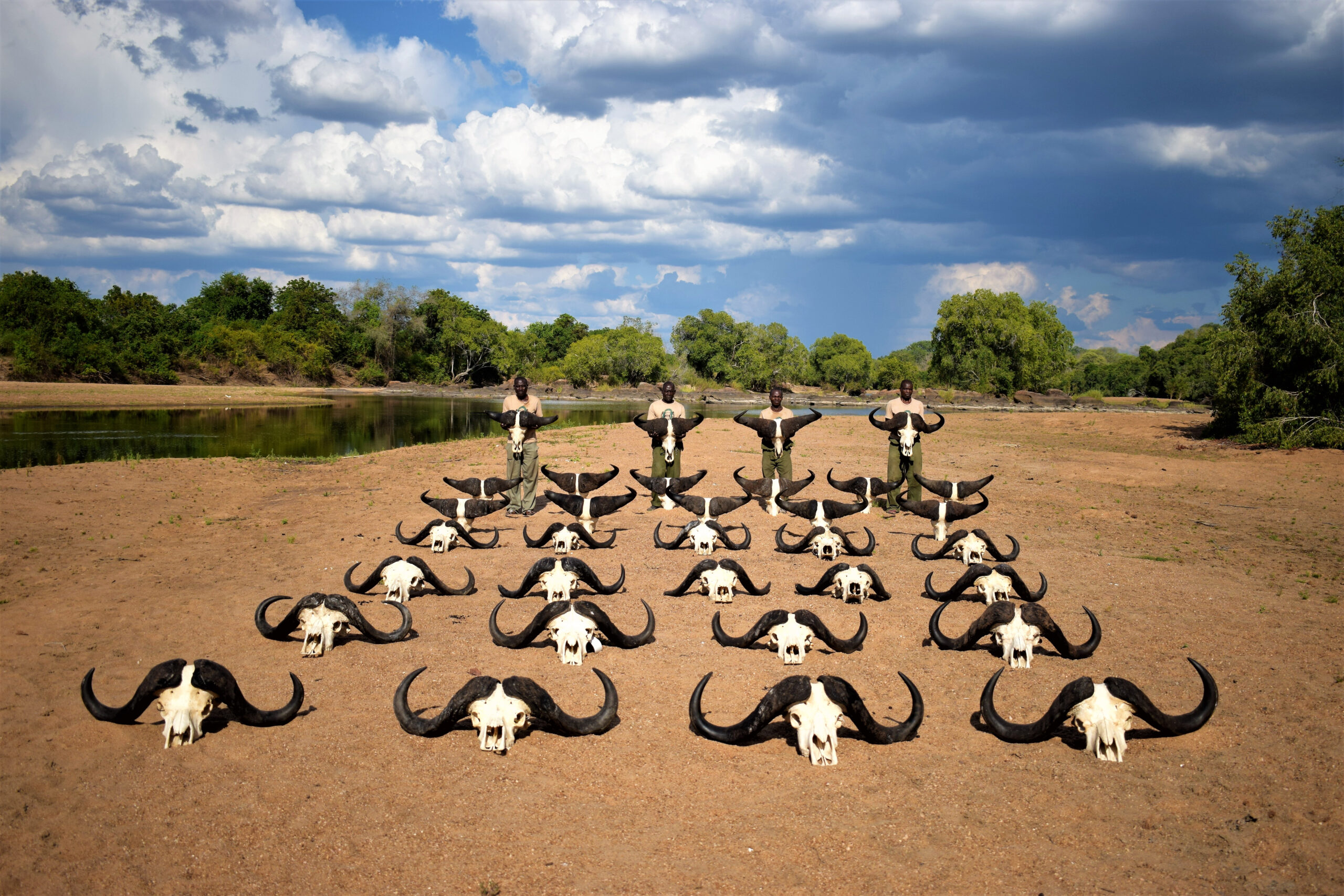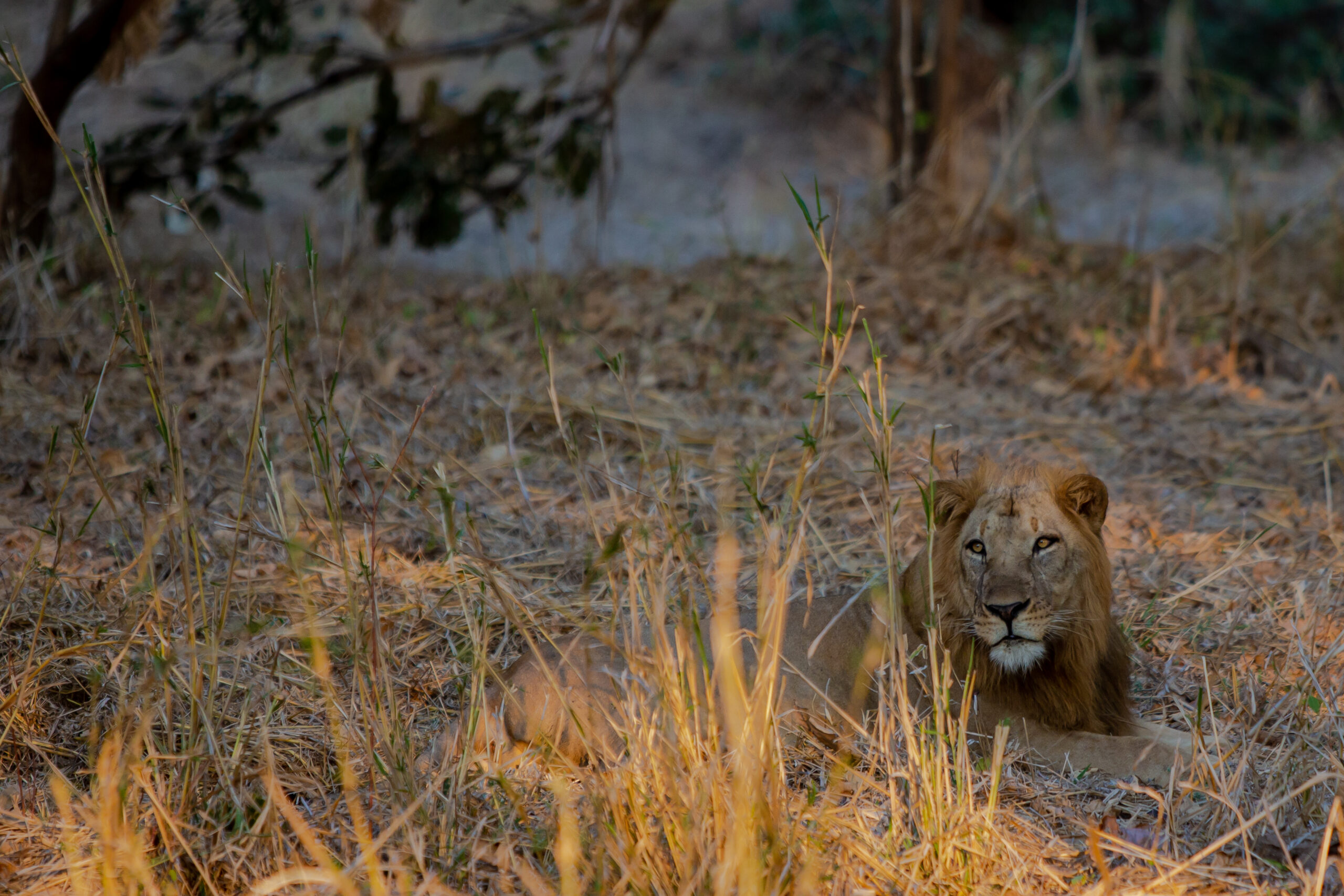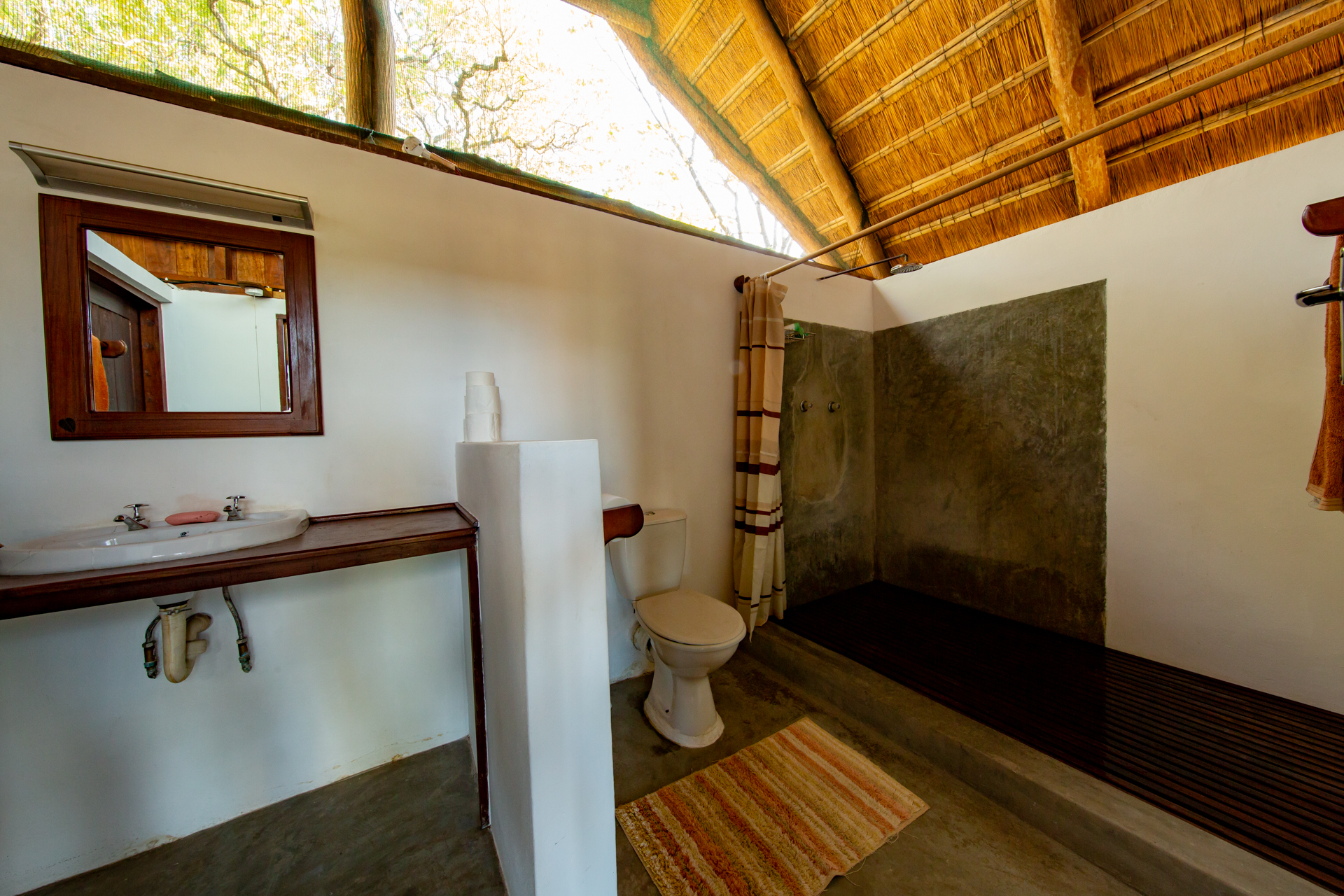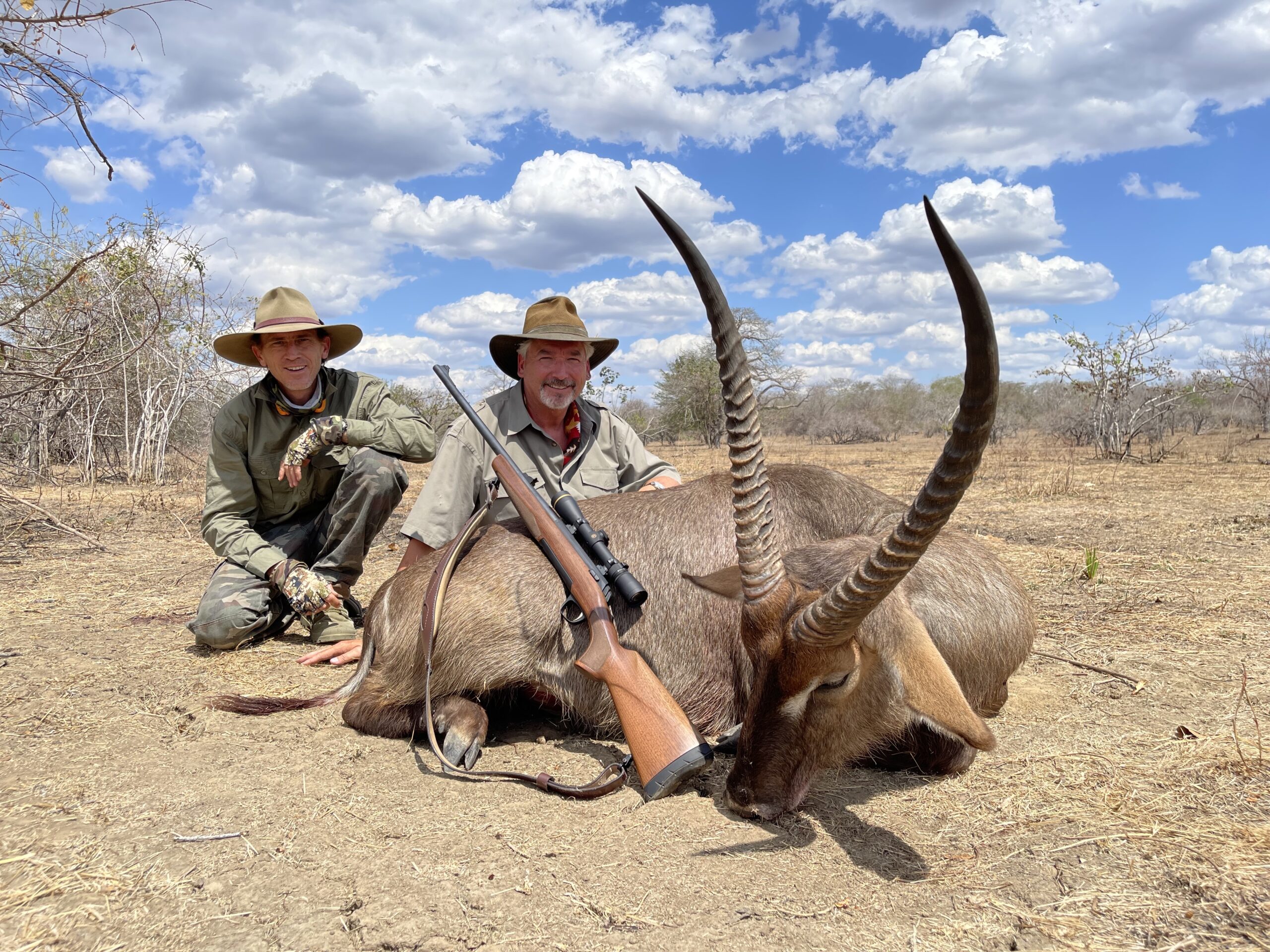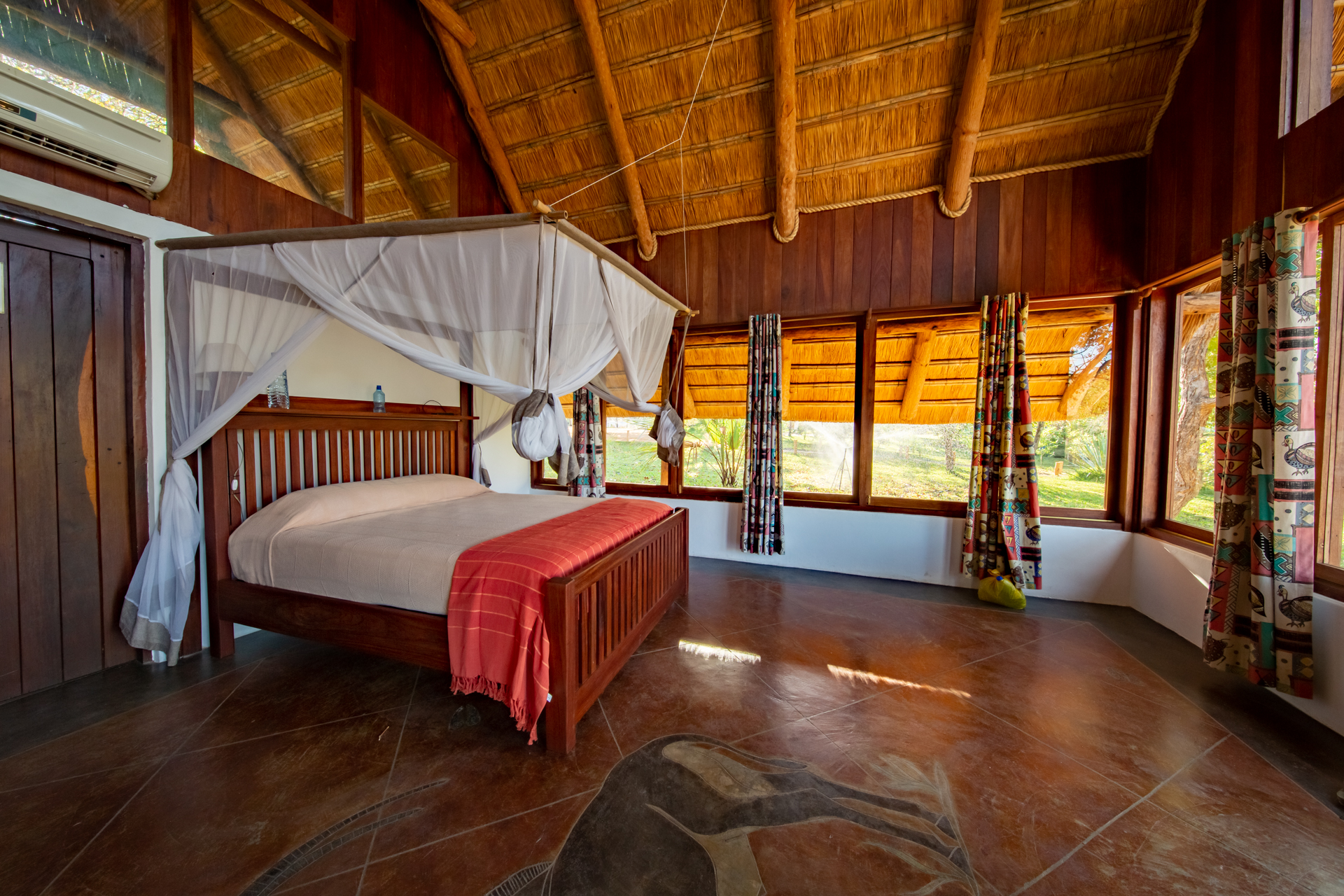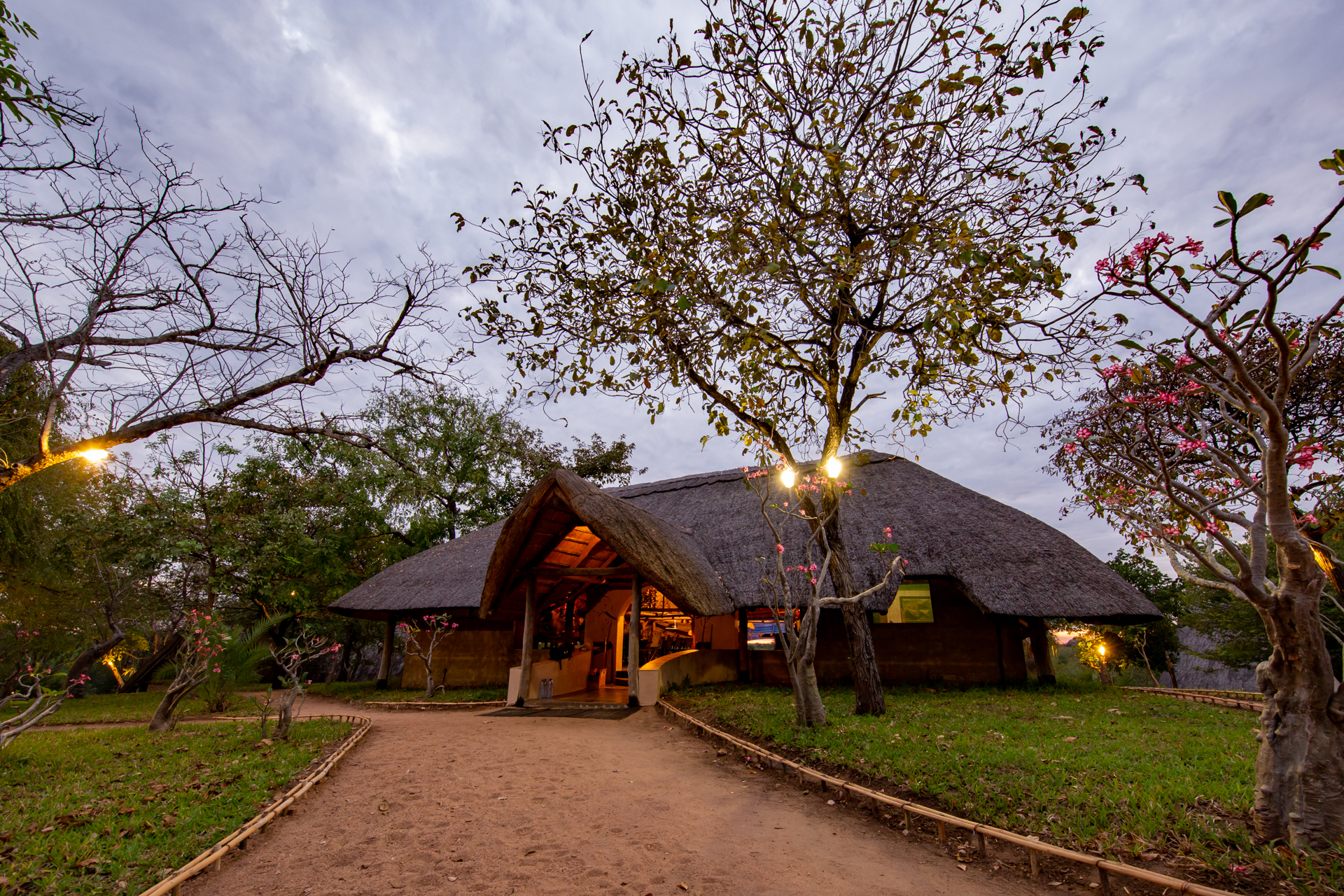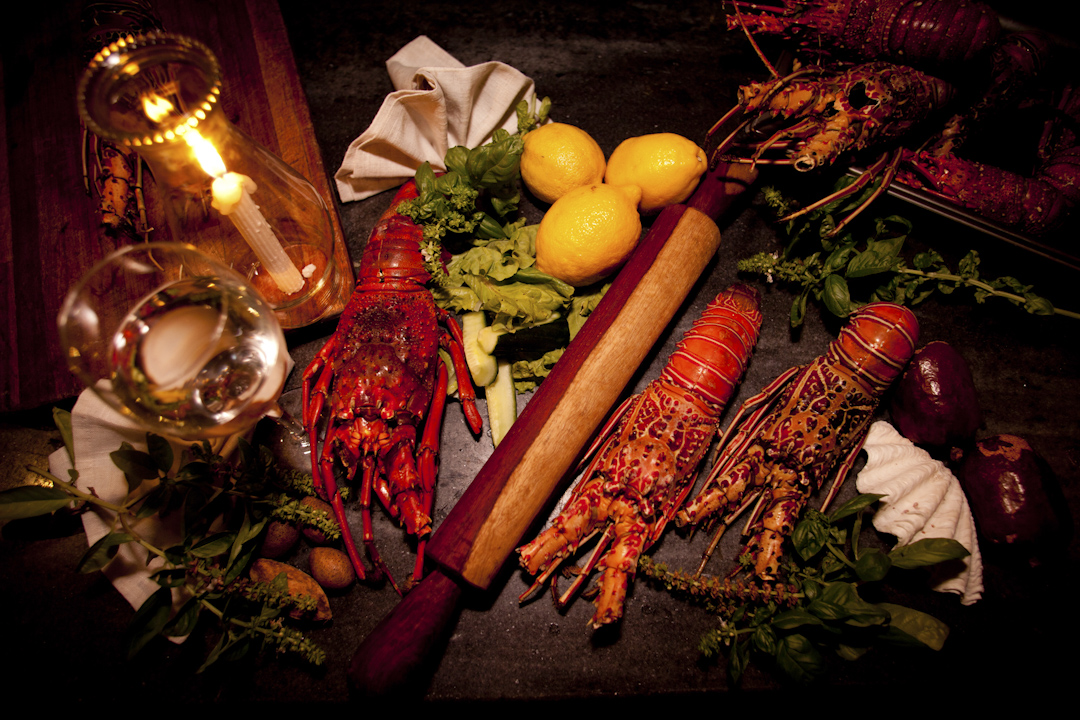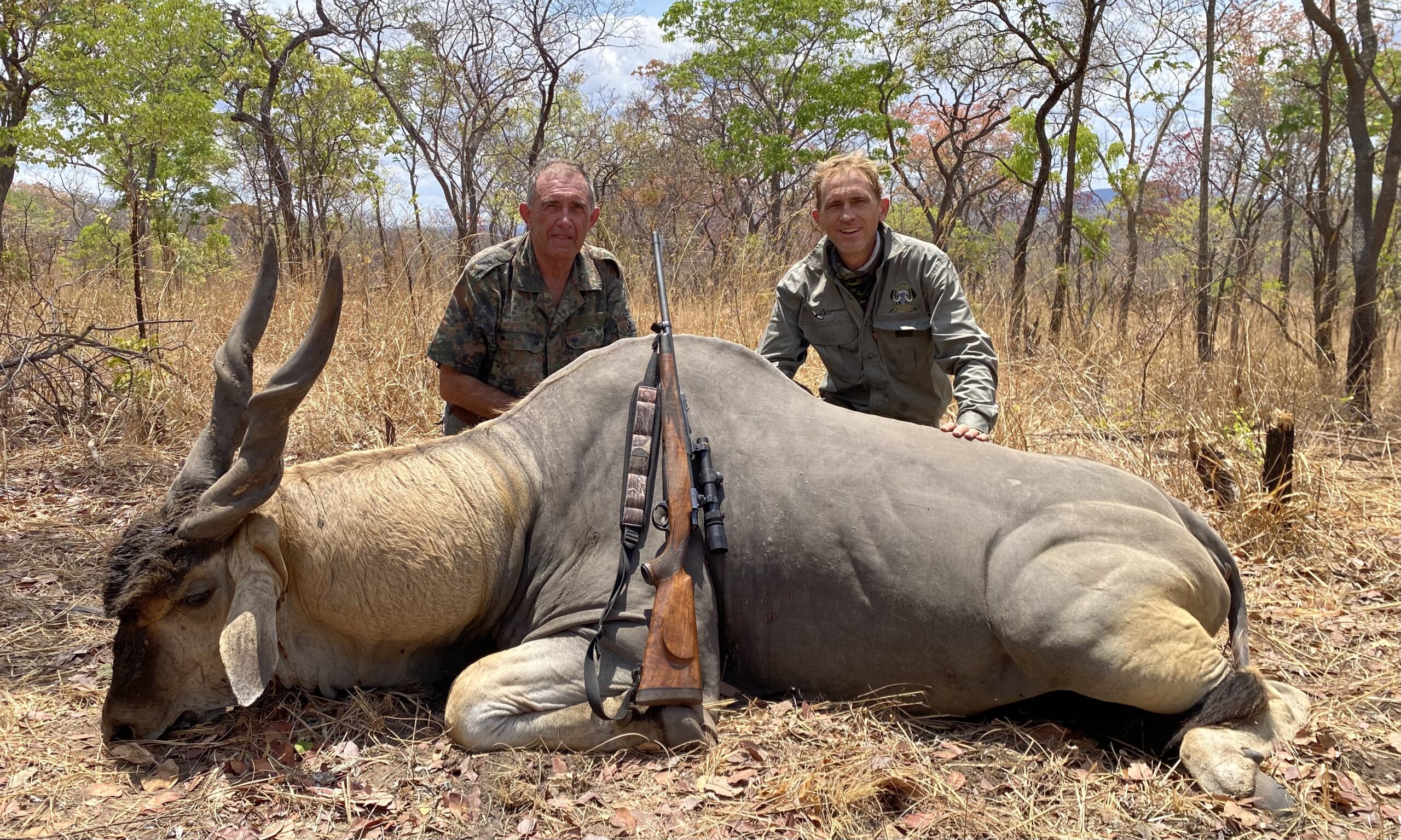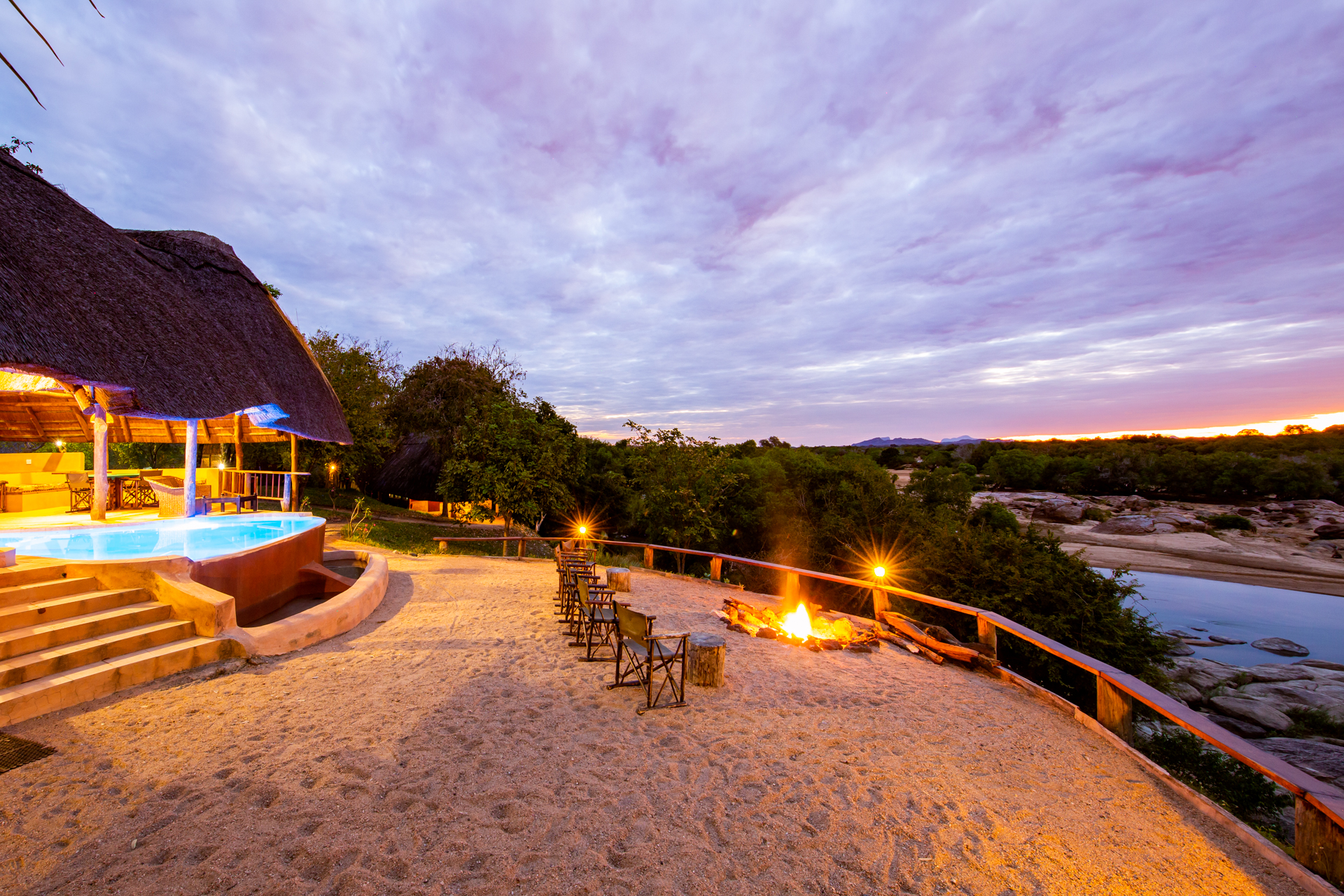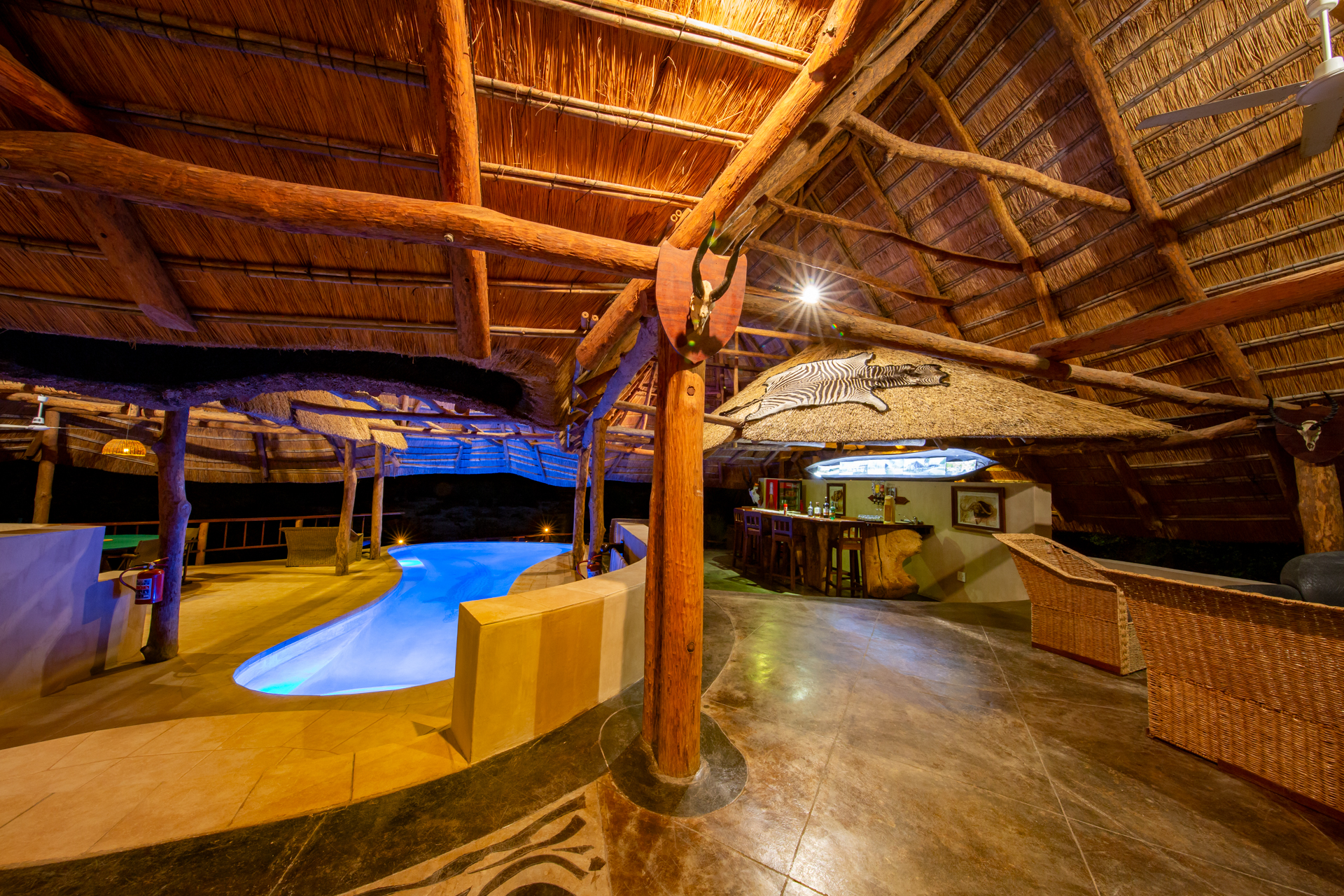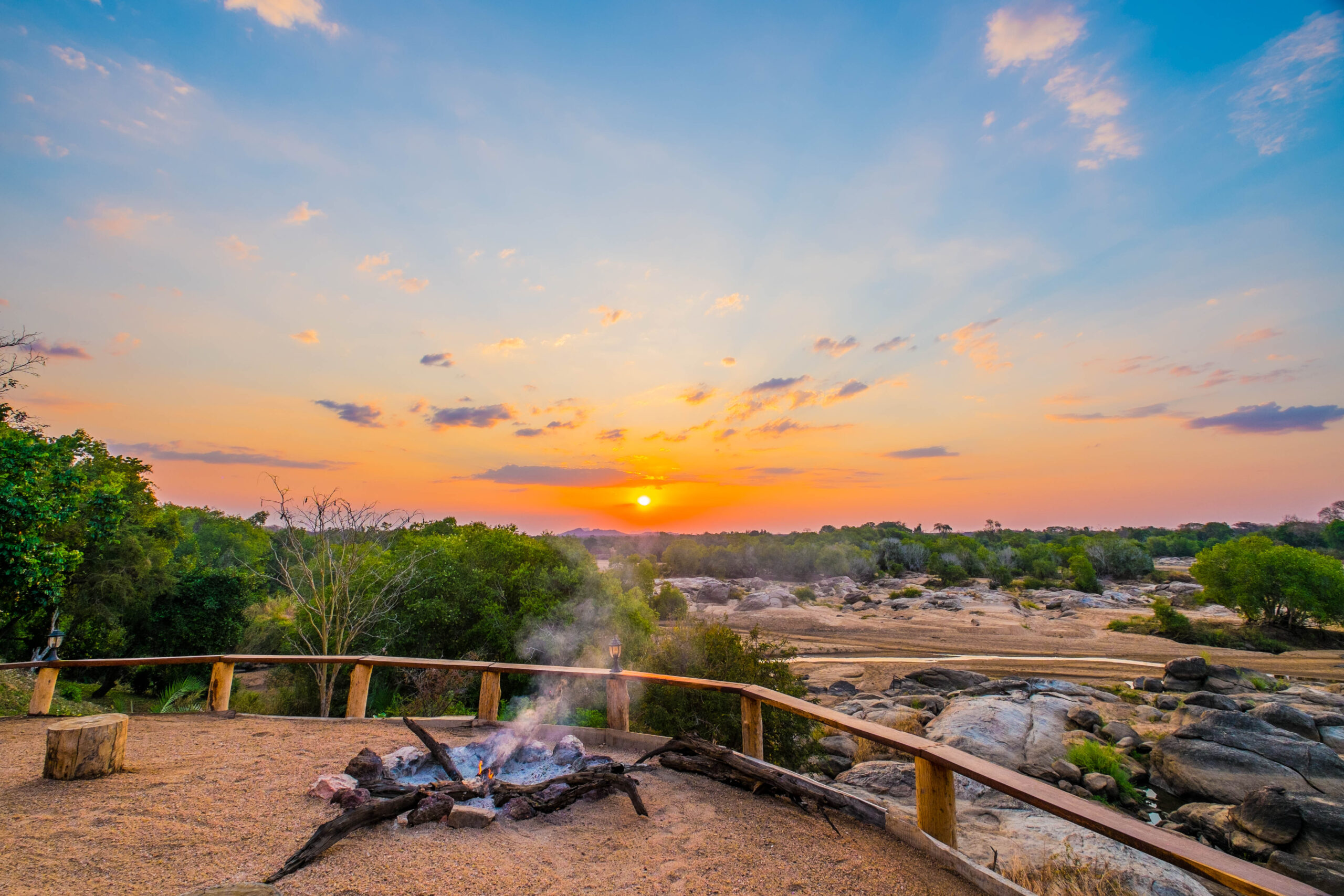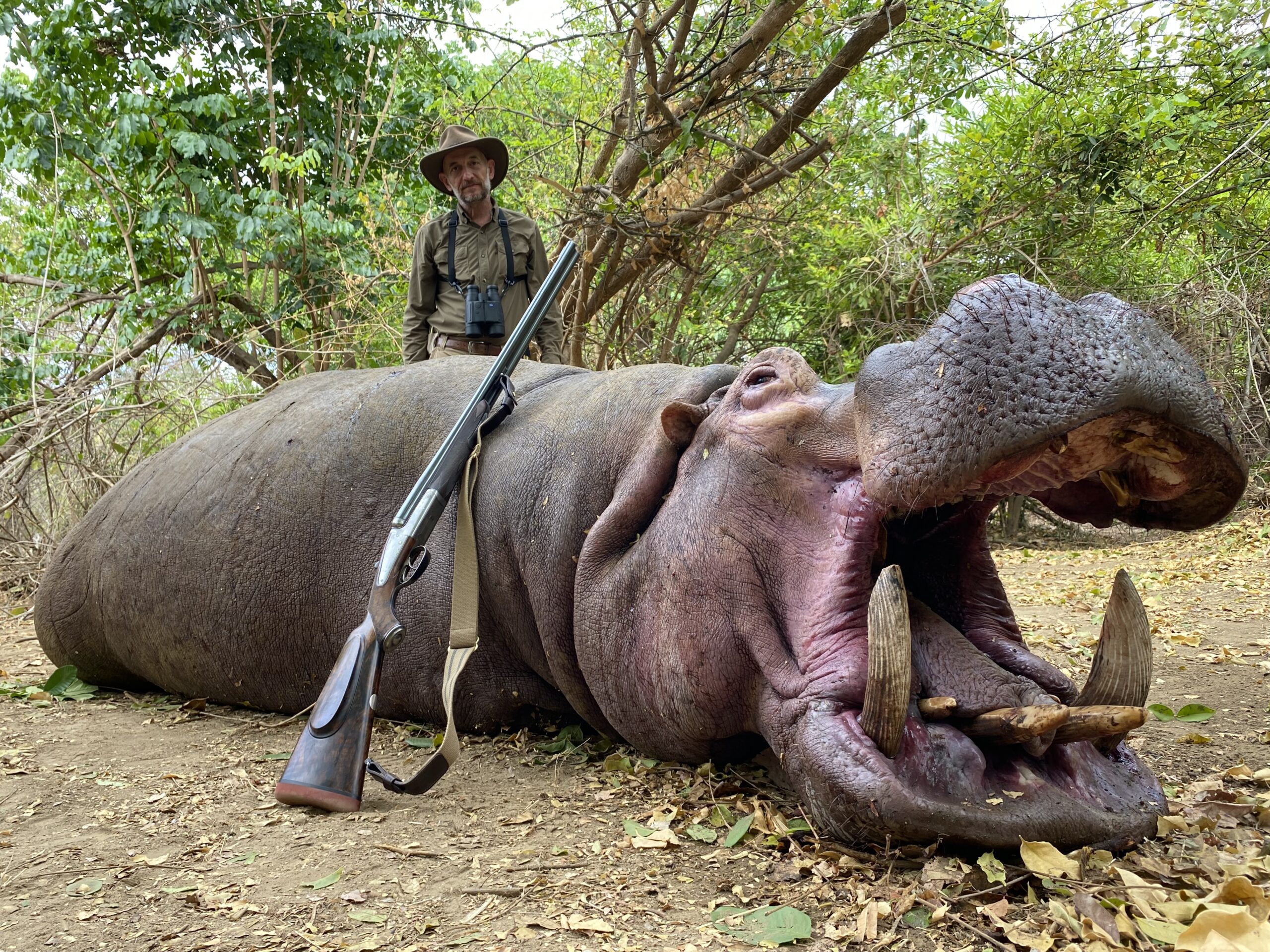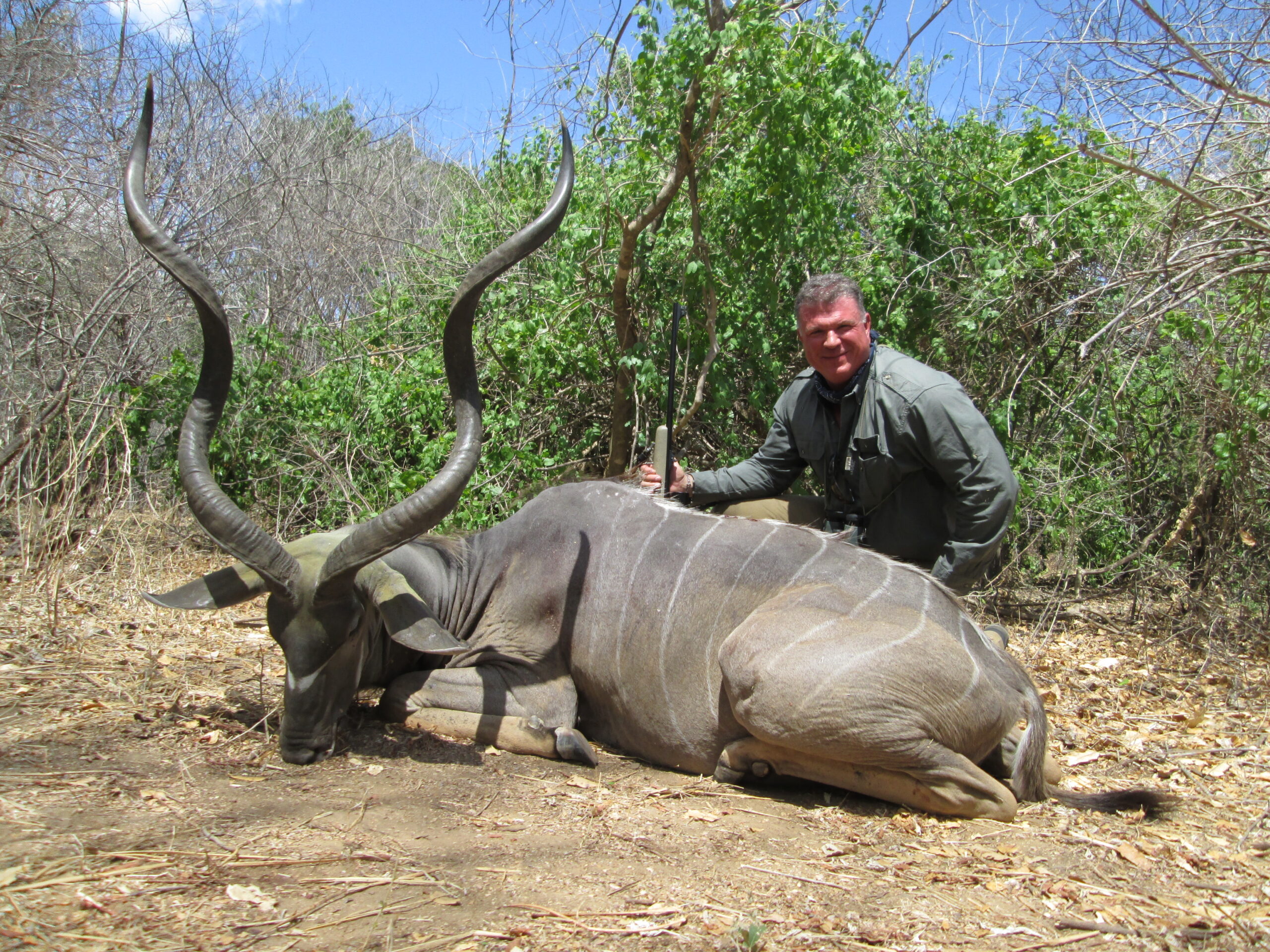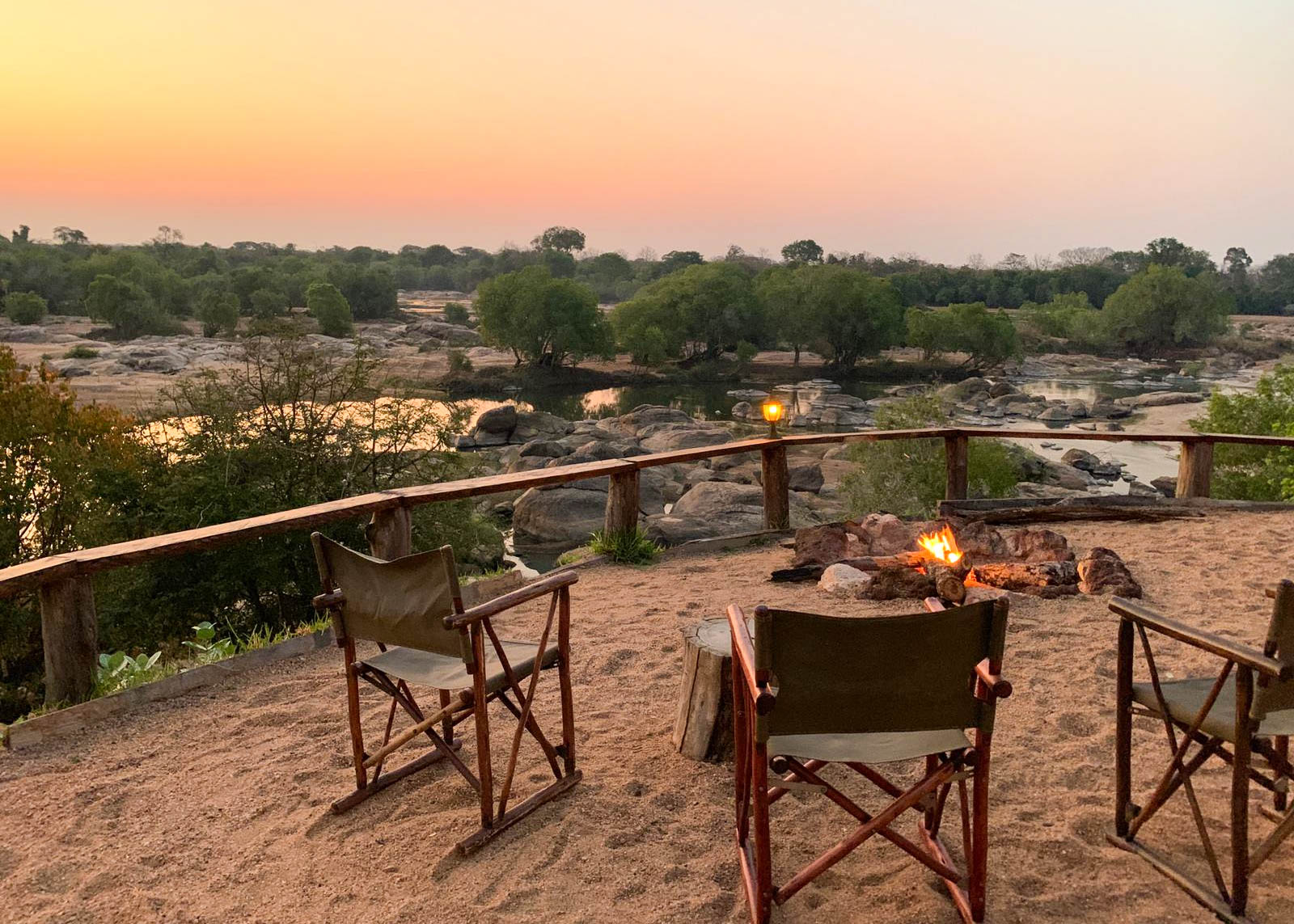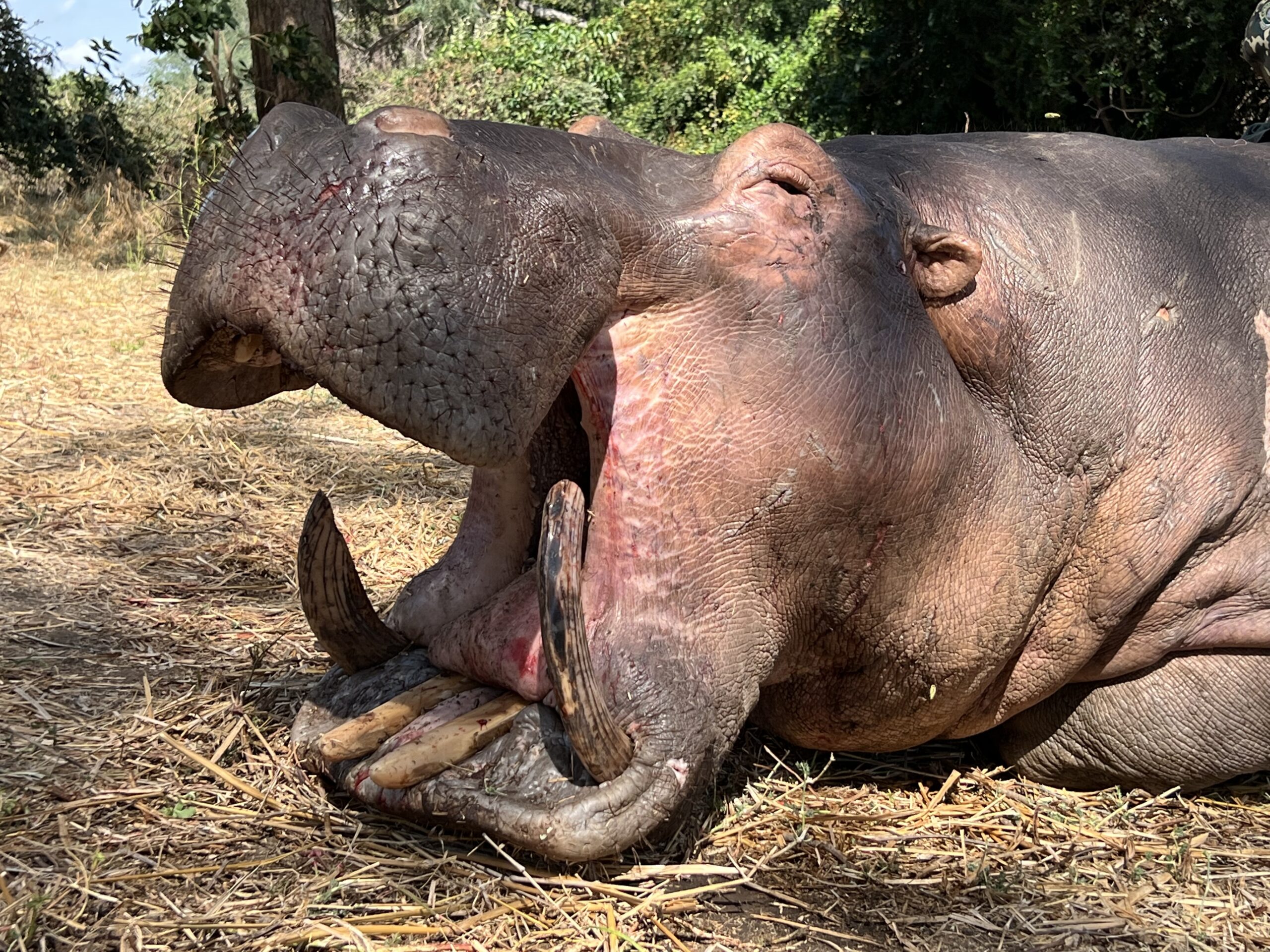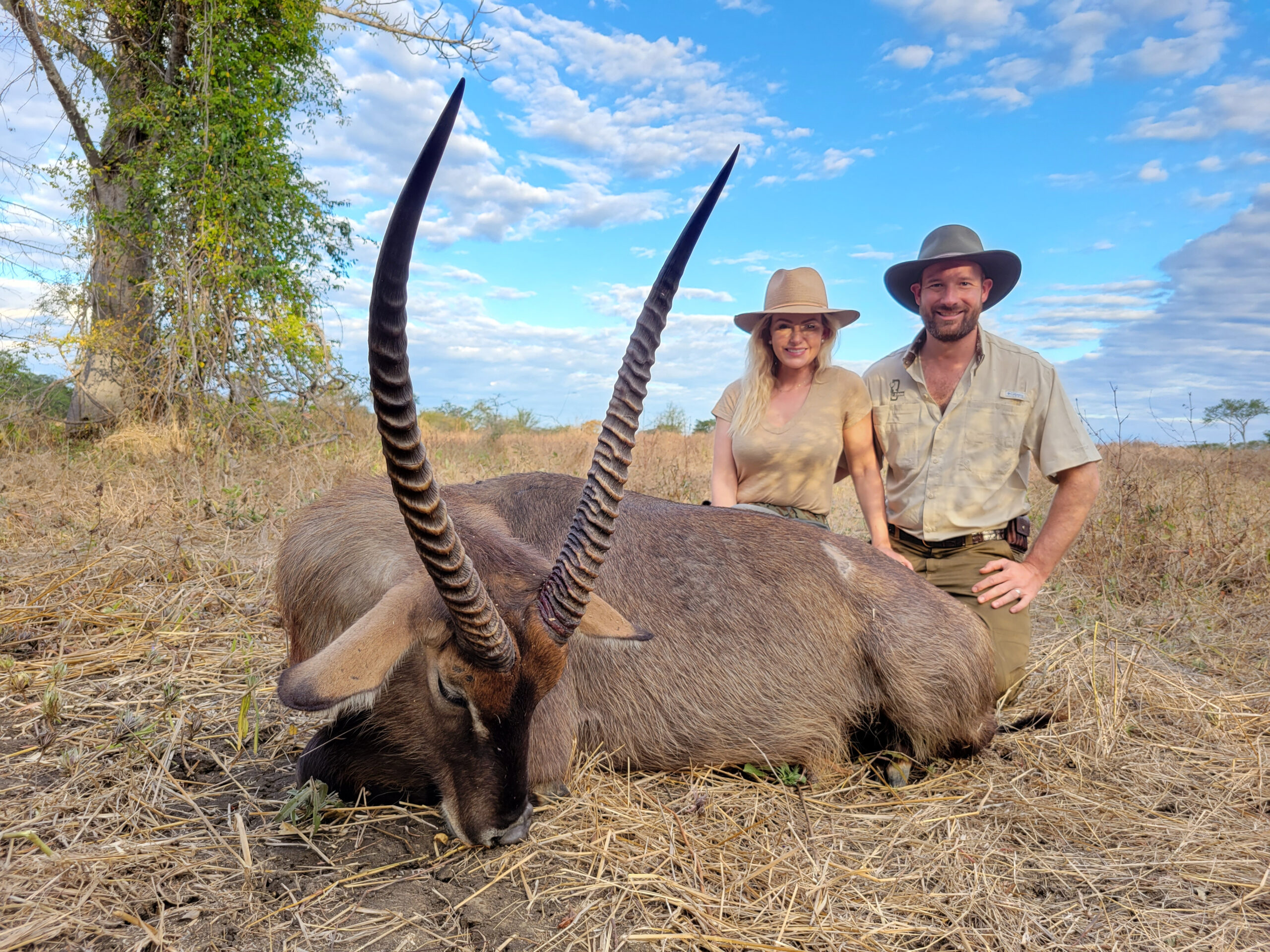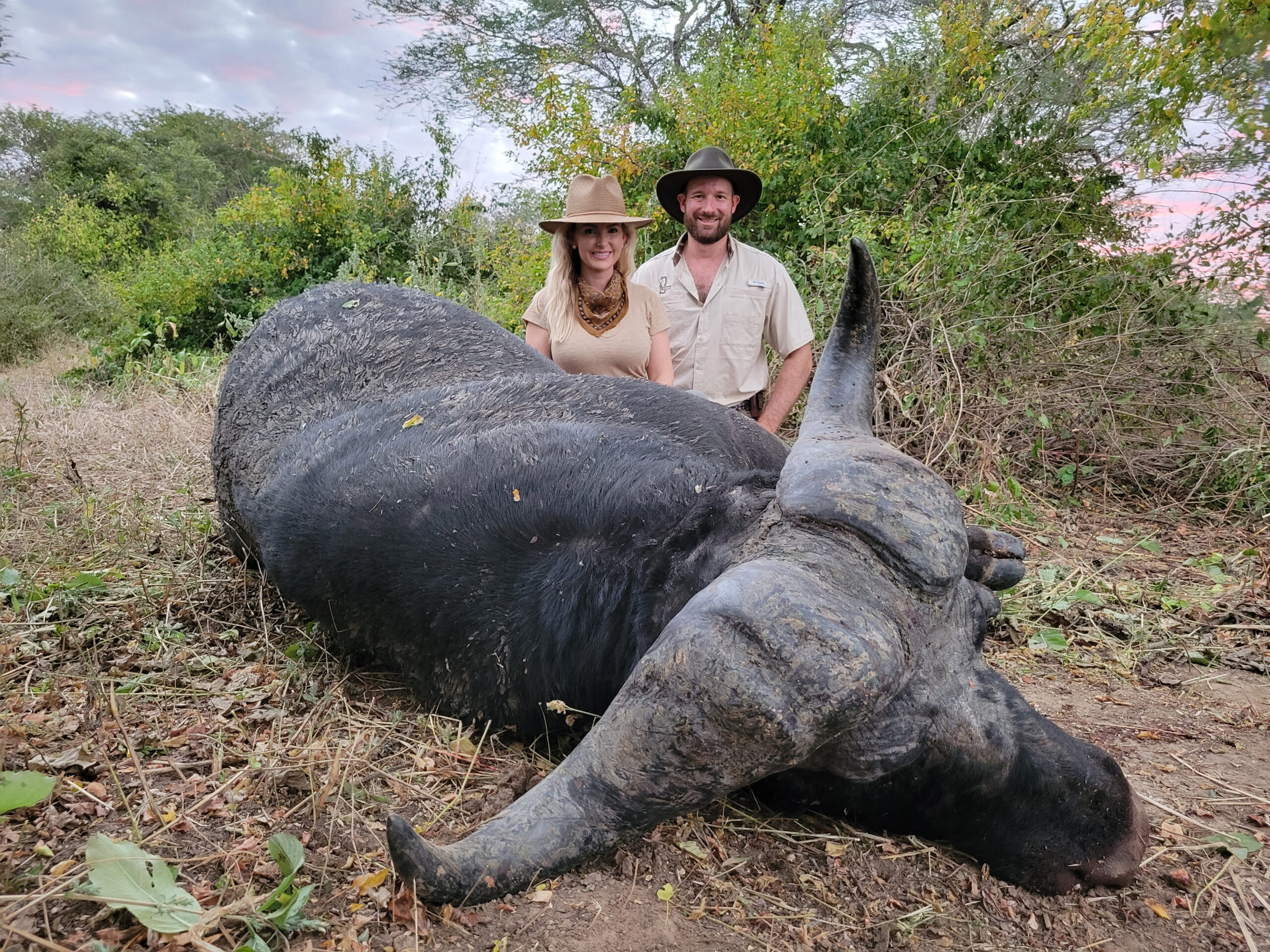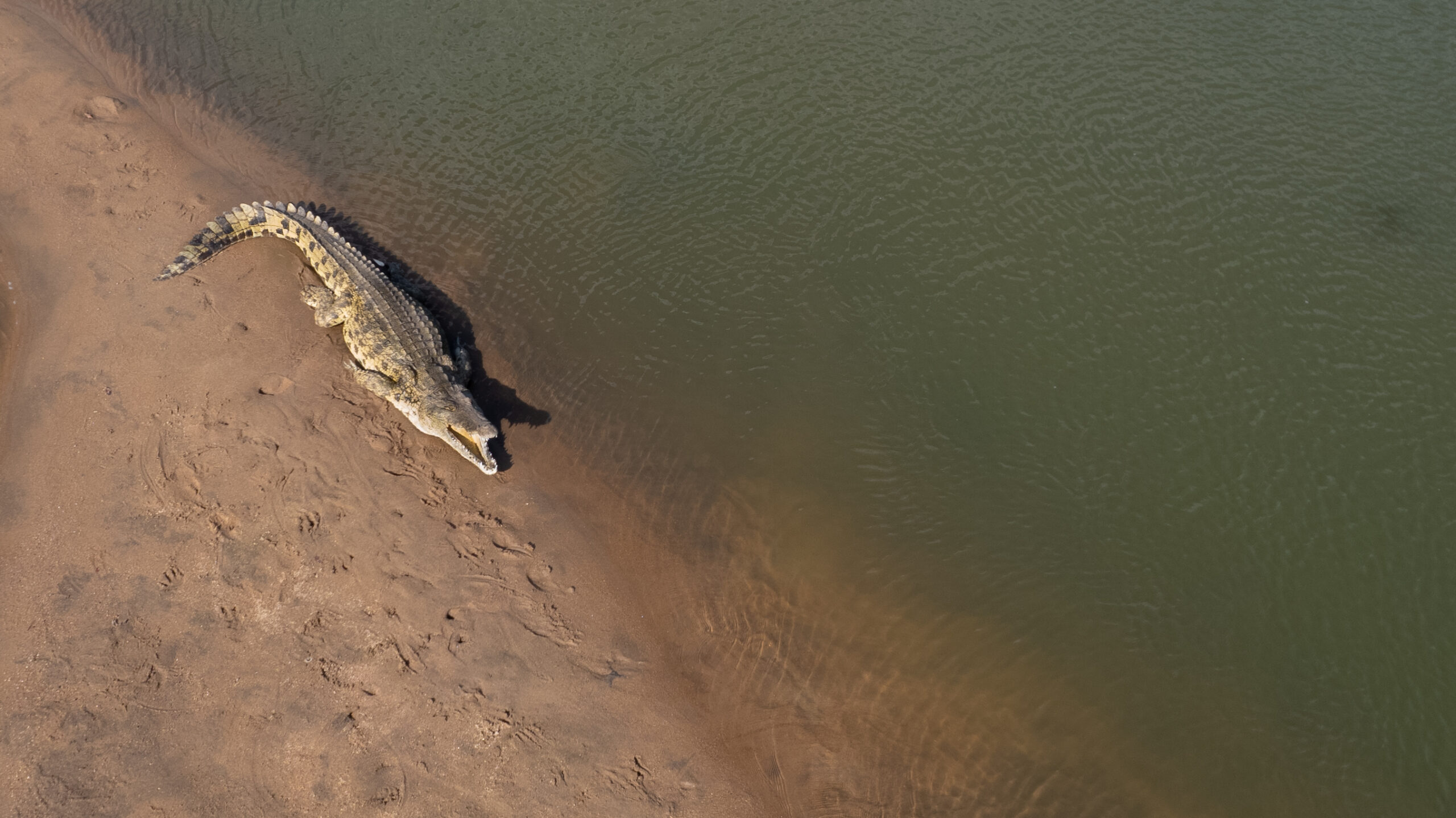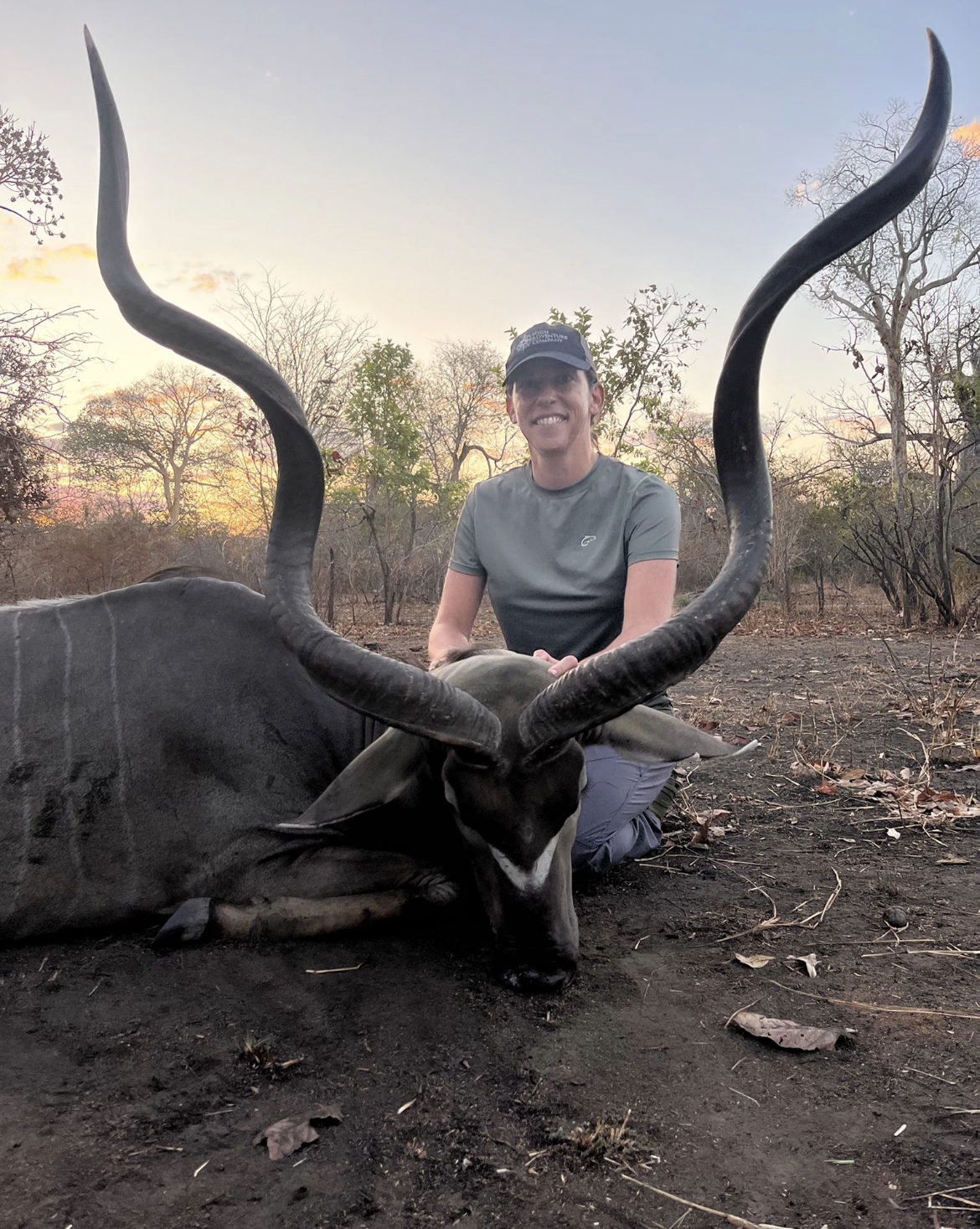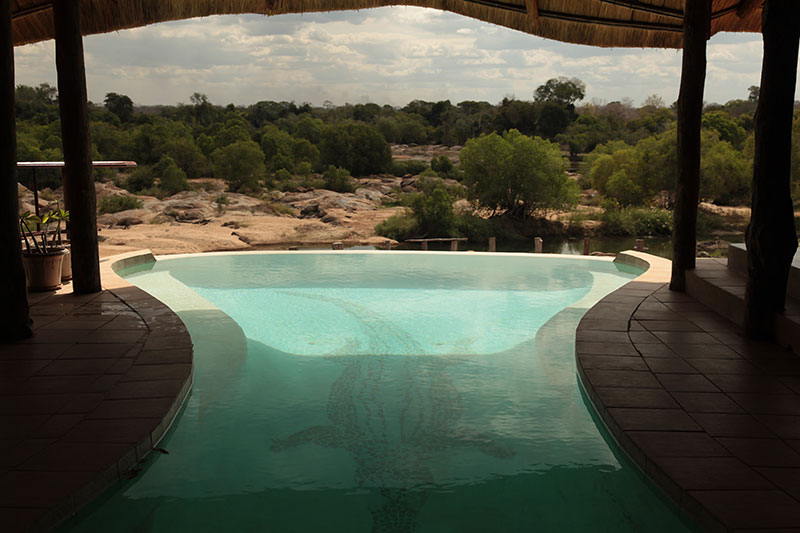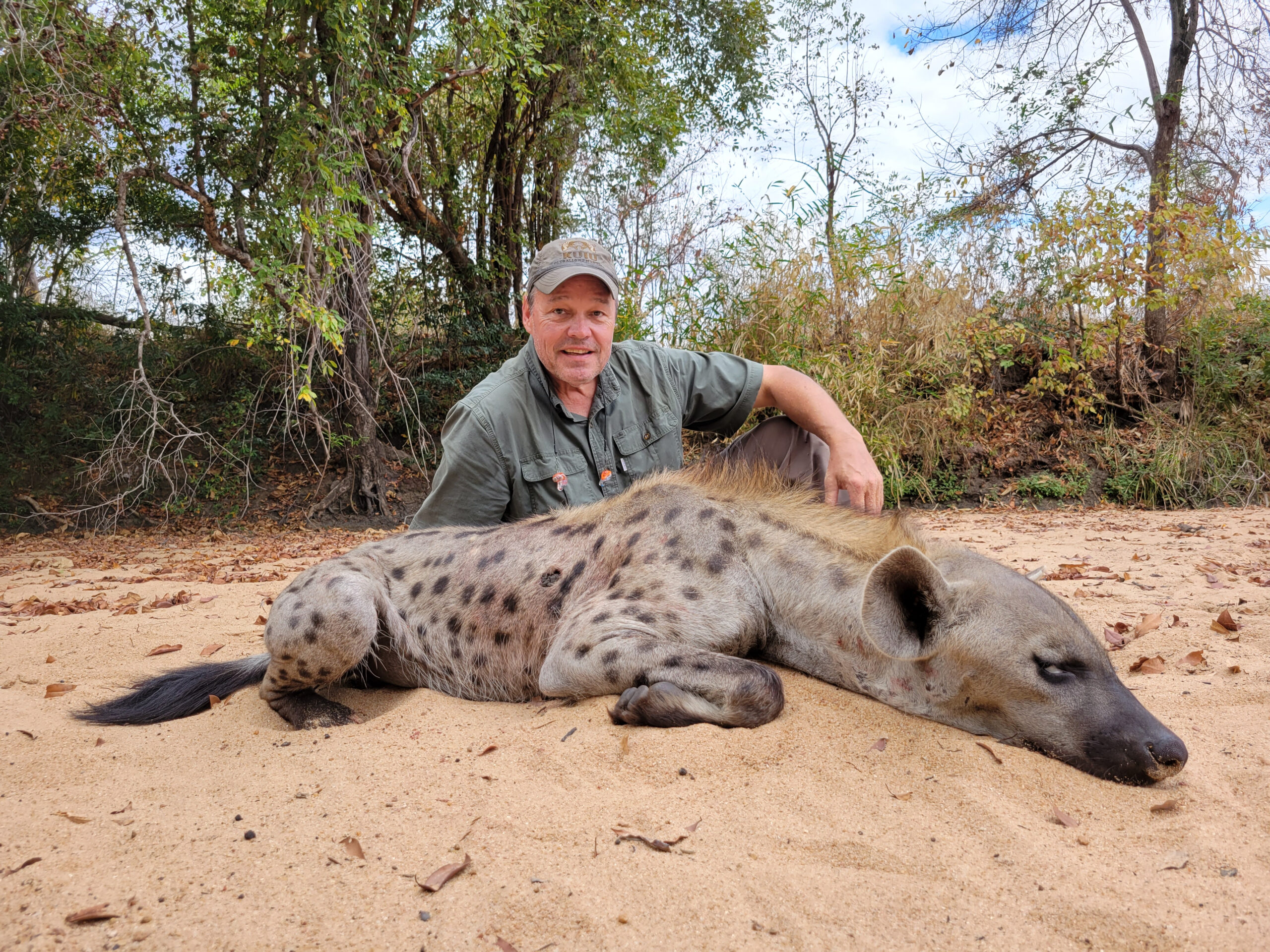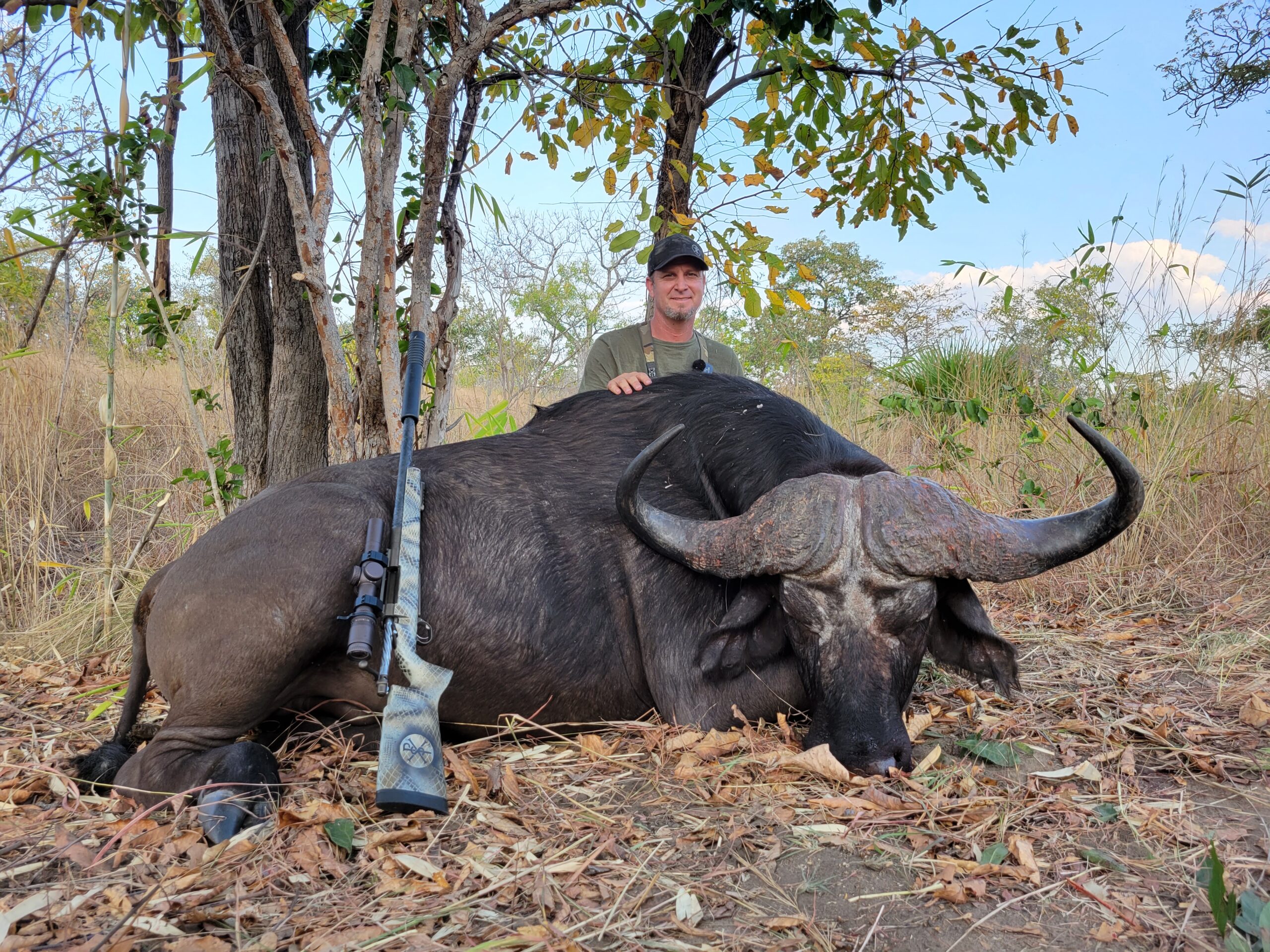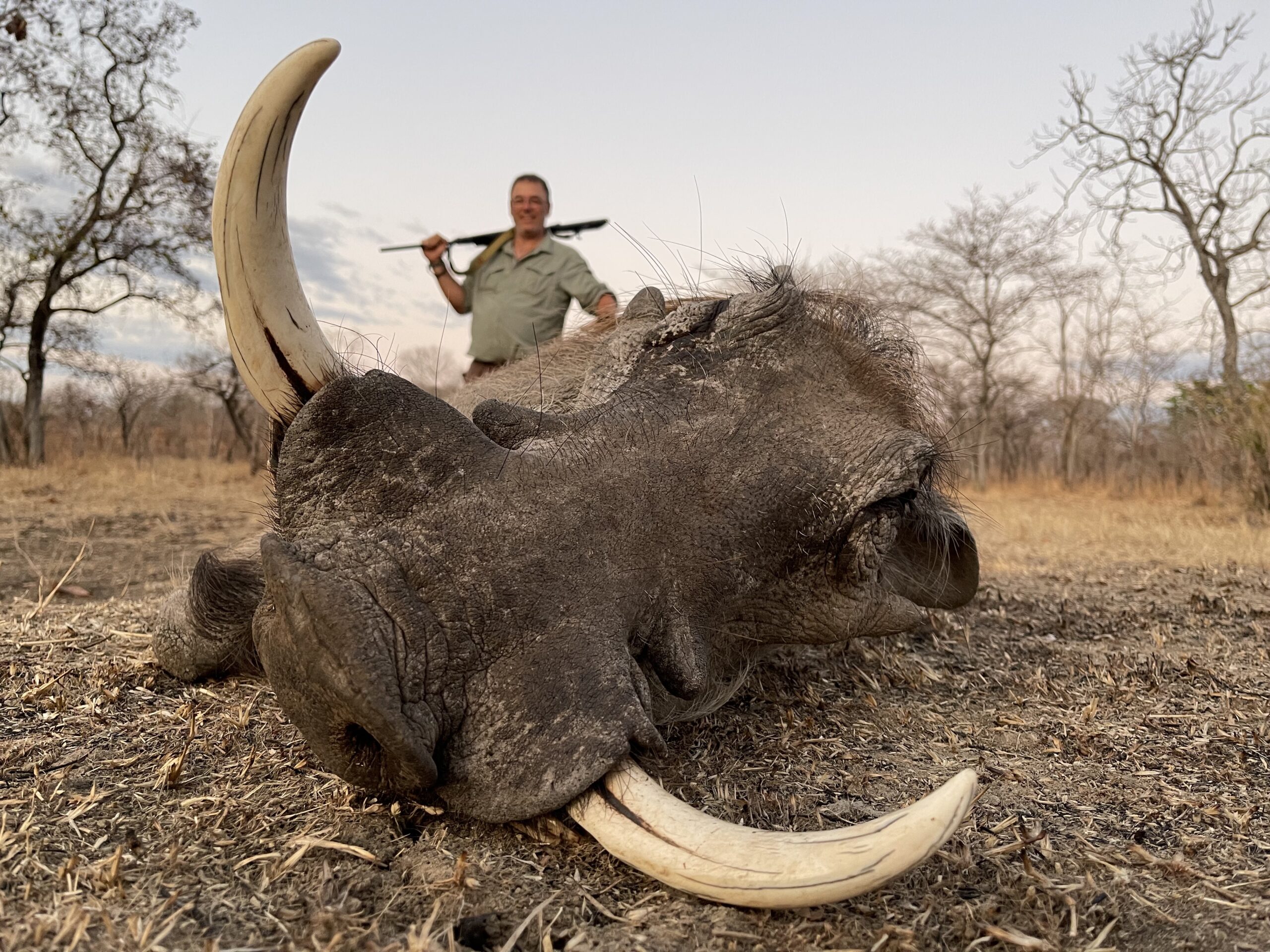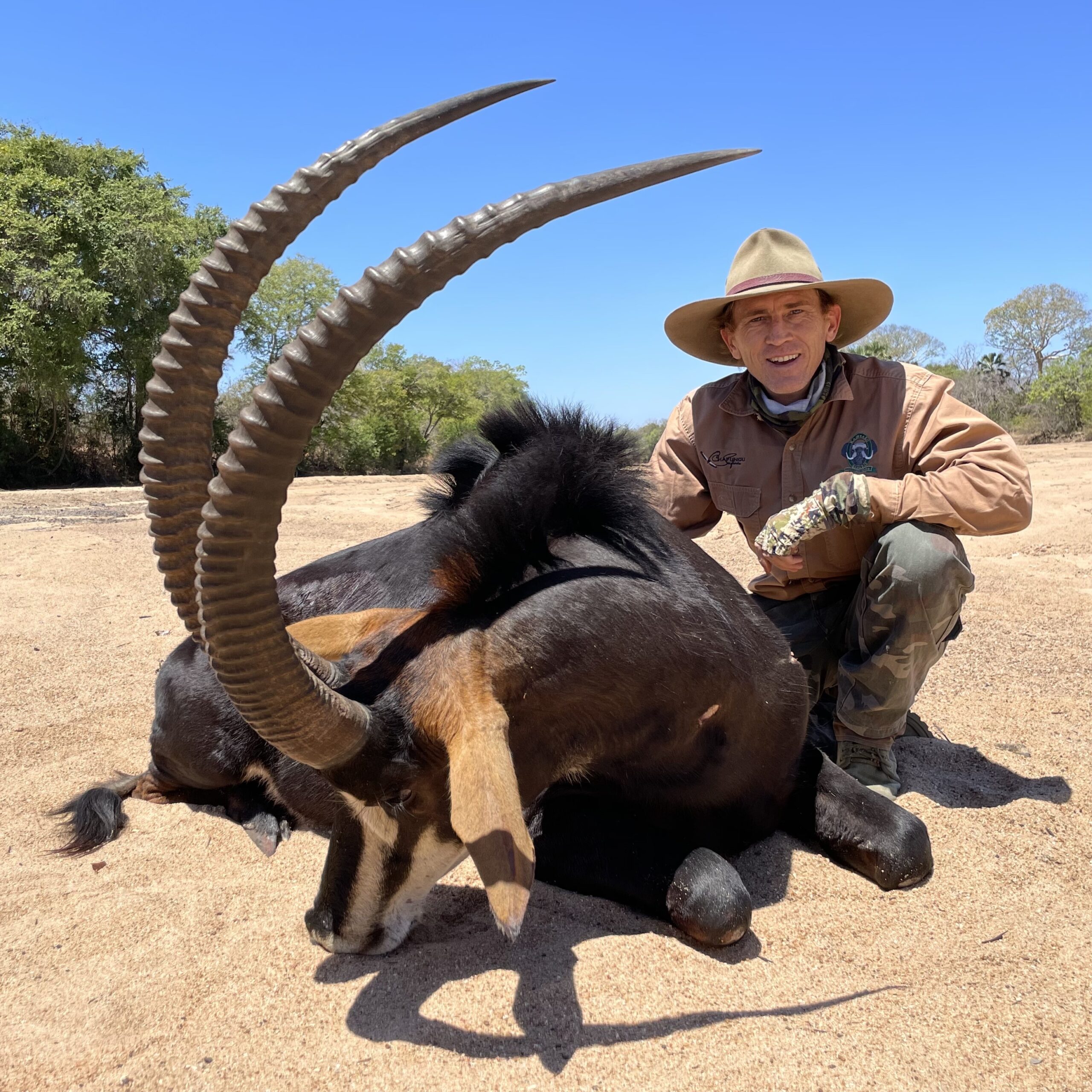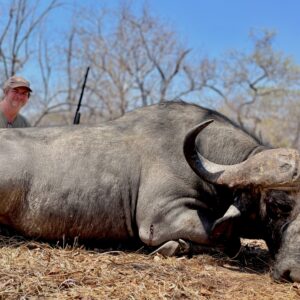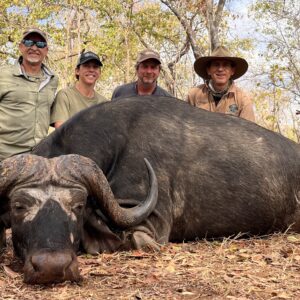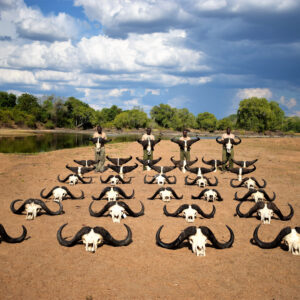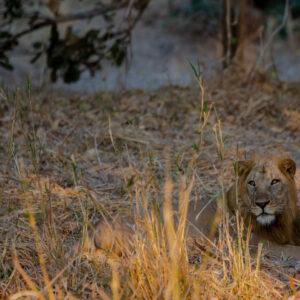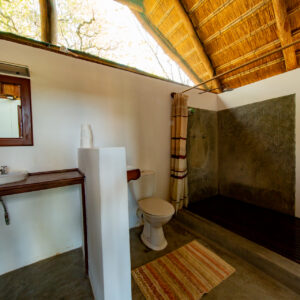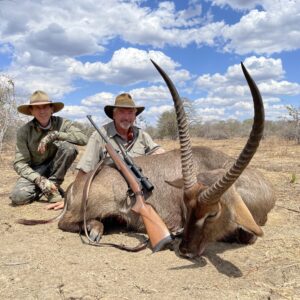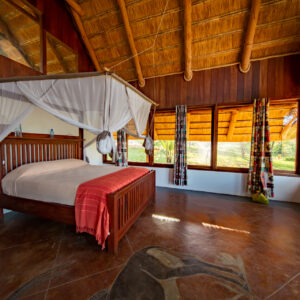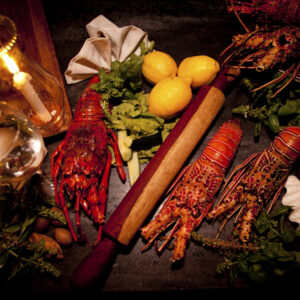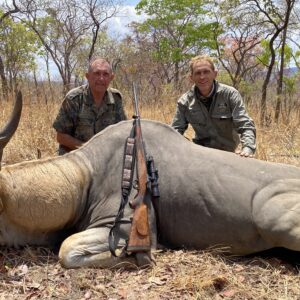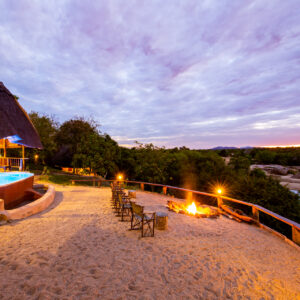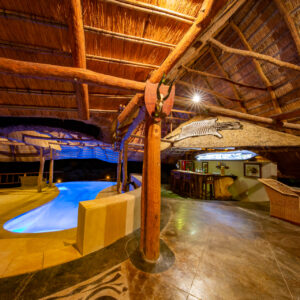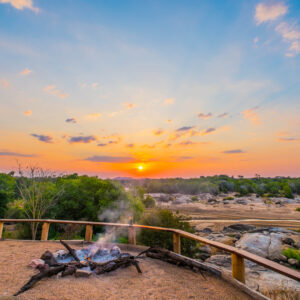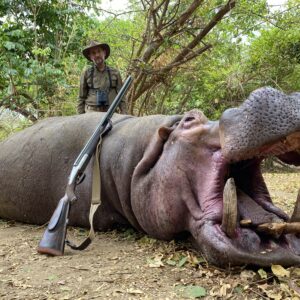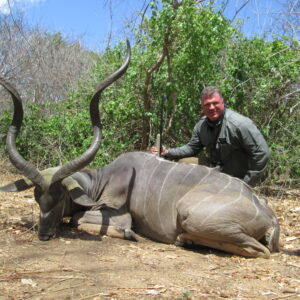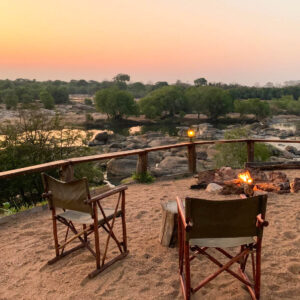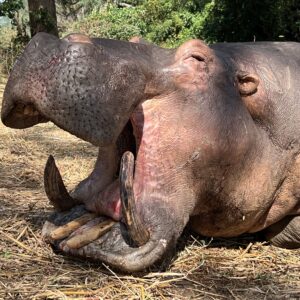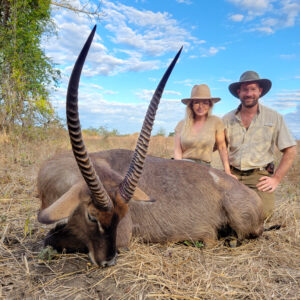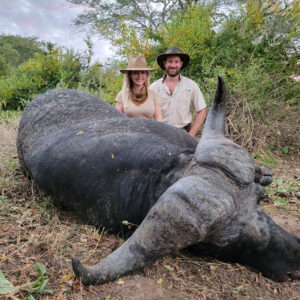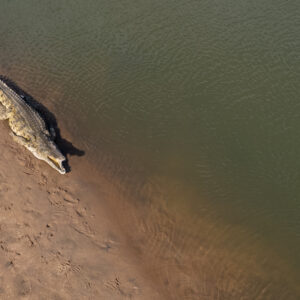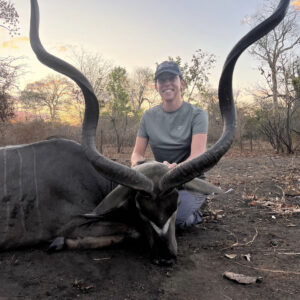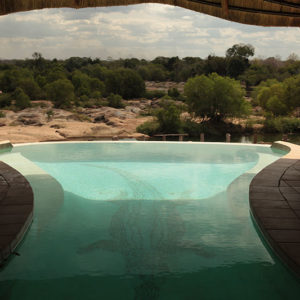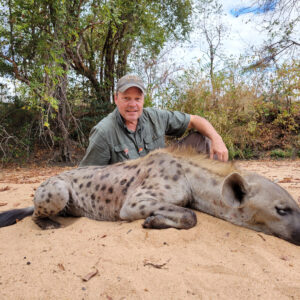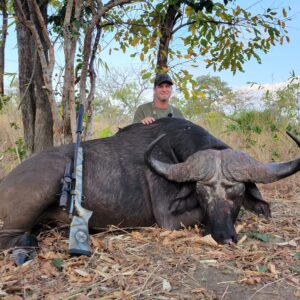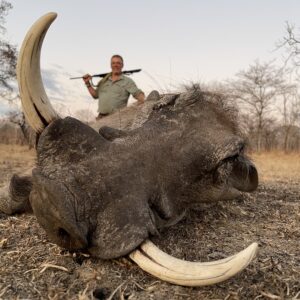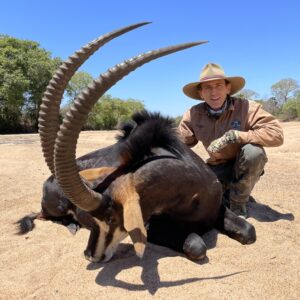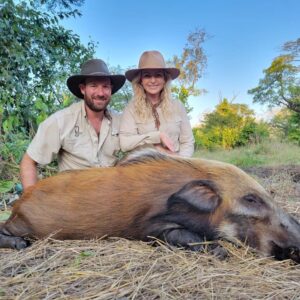Located on more than 1,500,000 acres of unspoiled, pristine Miombo Woodlands on the Niassa Reserve, the Kambako Camp should be on every sportsman’s bucket list. With its unique location and vast quantities of game, this unique reserve seldom fails to surprise the hunter. The sheer beauty of magnitude of the granite mountains, towering over the Miombo forests, open grasslands, bamboo thickets, flood plains and riverine forests and the mindboggling diversity of this biosphere is unequaled on the African continent. It takes a true hunter with a big heart, brawn, and tenacity to hunt and appreciate this very special place. Our western boundary for 70 miles is the meandering Lugenda River, the main lifeblood of the region. All animals make their way here in the drier months of the year.
Kambako Safaris’ concessions and hunts are continuously labeled as the best in Mozambique and the appeal lies in the ethical “old” African-type safaris led by a team of Professional Hunters, yielding exceptional trophies from at least 25 different species of common and endemic animals. We operate on massive quantities of acreage within four different concessions reaching from the Tanzanian border in the north all the way to the Zimbabwean border in the south. In percentage terms, Kambako Safaris control over 23% of the Mozambican quota for conservation areas.
The Niassa is every big game hunter’s ultimate dream as it is home to four of the Big Five as well as hippos and crocodiles. There are healthy numbers of endemic and rare species, including the Niassa wildebeest, Böhms zebra, Roosevelt sable and Livingstone Suni to name a few.
Big Game Hunts in Mozambique
We are very specific with what we hunt, no buffalo or sable hunting is done in the herds, only lone bulls or groups of bulls are pursued. Sable bulls must show secondary growth of 1” at the base of the horn, which ensures that they are over 7 years of age. With regards to the hunting of leopard, we adhere to a strict protocol, which ensures that we hunt these animals sustainably. Hunting is allowed at night, with artificial light, but only for leopard, crocodile and bushpig. Hunting of female, young and/or immature animals is prohibited.
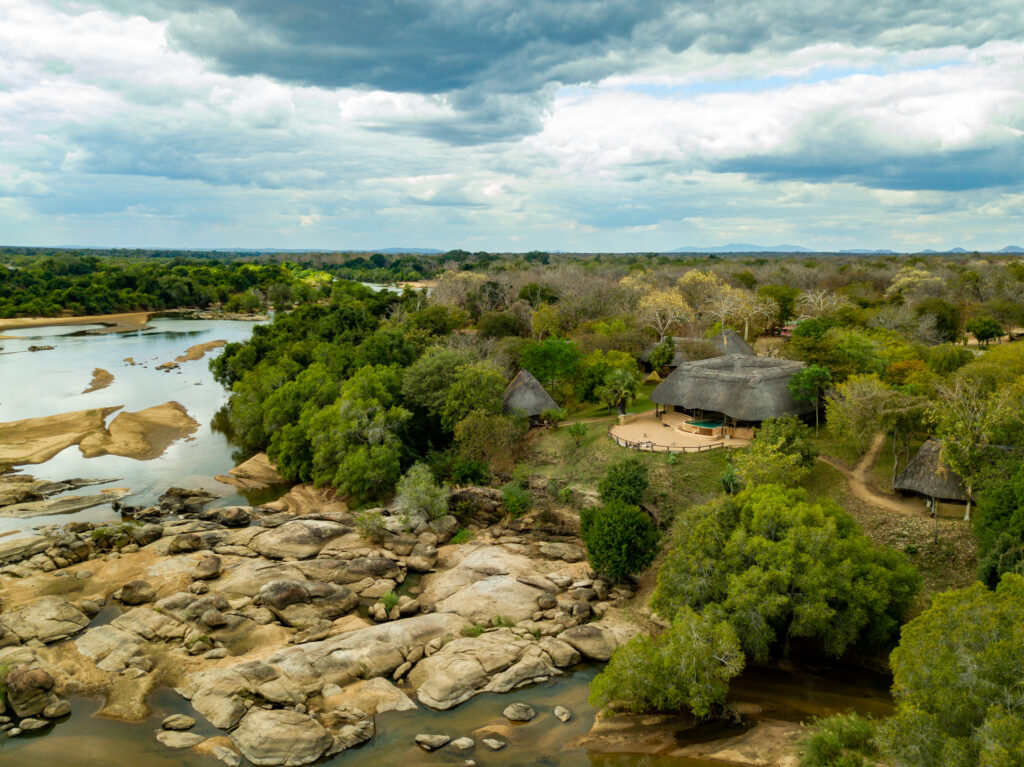
The Niassa at a Glance
- Concession size: 1,730,000 acres
- Vegetation: Miombo woodlands, riverine and open
- grasslands.
- Species: Buffalo, Leopard, Crocodile, Sable, Hyena
- Plains game
- Hunting season: 1 June – 30 November
- Weather: June / July / Aug 65° – 88° F
- Sept / Oct / Nov 80° – 100° F+
- Point of entry: Pemba International Airport (POL)
- Language: Portuguese, English, Swahili
- Medical: Local hospital in Pemba
Accommodations ↗
The main camp is superbly located high up on this river’s banks. With the most amazing views towards the west, Kambako camp offers luxurious under thatch air-conditioned lodges with en-suite bathrooms, an open-air bar, lounge and dining area, graced with a superb infinity pool for your leisure. The camp has broadband Internet and satellite TV (upon request).
Unique Features
- 1,400,000 acres of forests, riverine, mountains and savannah
- Five thatched air-conditioned chalets with en-suite bathroom
- Infinity pool
- Thatched lounge, bar and dining hall
- Wi-Fi, electricity and daily laundry
- Private gravel airstrip
- Malaria area
- Big game hunting: buffalo, crocodile, leopard
Hunting Seasons ↗
Our hunting season is from 1 June to 30th November. The Niassa Reserve falls within the sub-tropical region of the country and receives on average 1000mm (40”) rain per year. Winter, which is the dry season, stretches from May to mid-September. Animals become then more visible through to November as the bush dries out and they tend to congregate close to water sources. August, September and October are the best months to hunt for predators while November is very good for buffalo as it is the driest time of the year.
Weather & Travel ↗
The closest port of entry to the Niassa Reserve is Pemba International Airport (POL). We recommend that hunters fly via OR Tambo International Airport in Johannesburg, to Pemba directly on SA Airlink. There is one flight per day (none on Sundays and Tuesdays). A High Adventure Company representative will meet and assist each client on arrival at Pemba airport. Clients will travel in a light aircraft from here to camp.
Firearms & Travel
It is advisable to take out full insurance for all firearms before travelling anywhere in Africa. Each hunter is allowed to bring a maximum of three firearms to Mozambique with a maximum of 100 rounds of ammunition per firearm. The airline’s restriction is 11lbs of ammunition. Ensure that your ammunition is in a separate lockable container from your rifle.
A valid firearm import permit is required before any hunter arrives in Mozambique. We assist with the application and every hunter must provide us at least 12 weeks before the commencement of the safari, with a scanned colour copy of his/her passport, a color copy of a passport size photograph in .jpeg format, a copy of the US Customs form 4457 or Firearm License from your home country, the travel itinerary and the completed Client Information Sheet. Clients visiting or travelling through South Africa (depending on the airline in-transit regulations) will need to complete a South Africa Firearms Permit Application Form (SAPS 520) and obtain the permit prior to their arrival. Please check with your travel agent or airline, the transit procedure when travelling through South Africa.
No automatic, semi-automatic or military grade firearms are allowed. Bowhunting is allowed in Mozambique and is currently legal during the hunting season. All species may be taken with a bow and no import permit is required. Should a hunter wish not to bring his/ her own rifle on the safari, there are camp rifles and ammunition available for their use at an additional cost.
HUNTING PRICING
Call for current pricing.
For More information or questions – please fill out the form below or contact us at 678.388.2205


